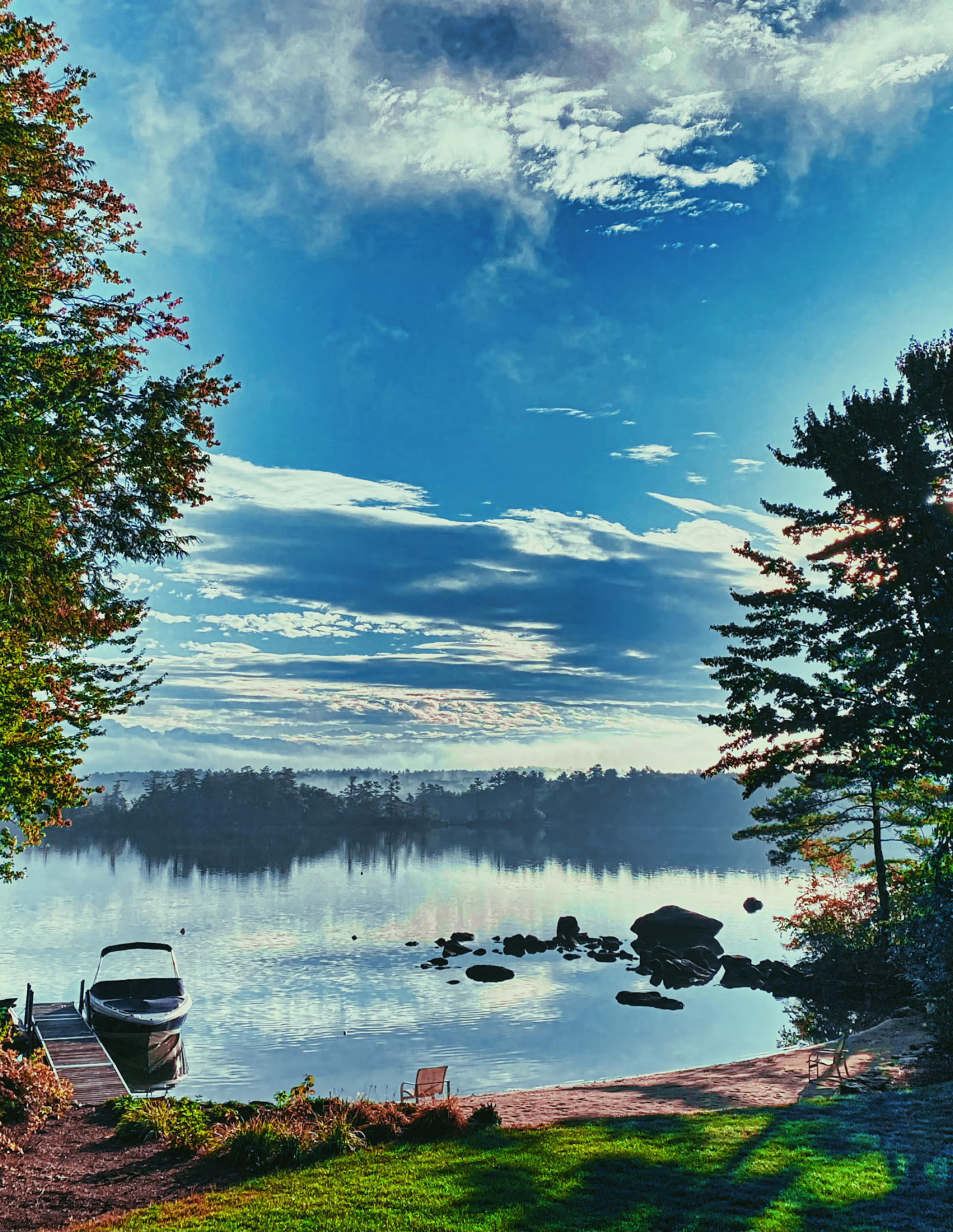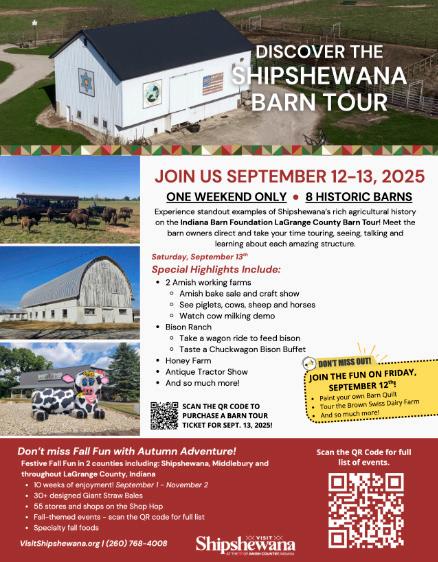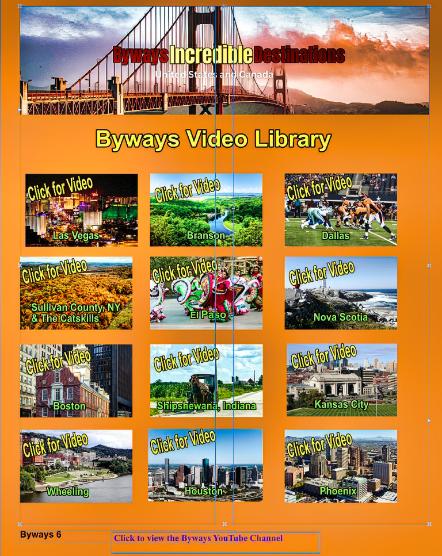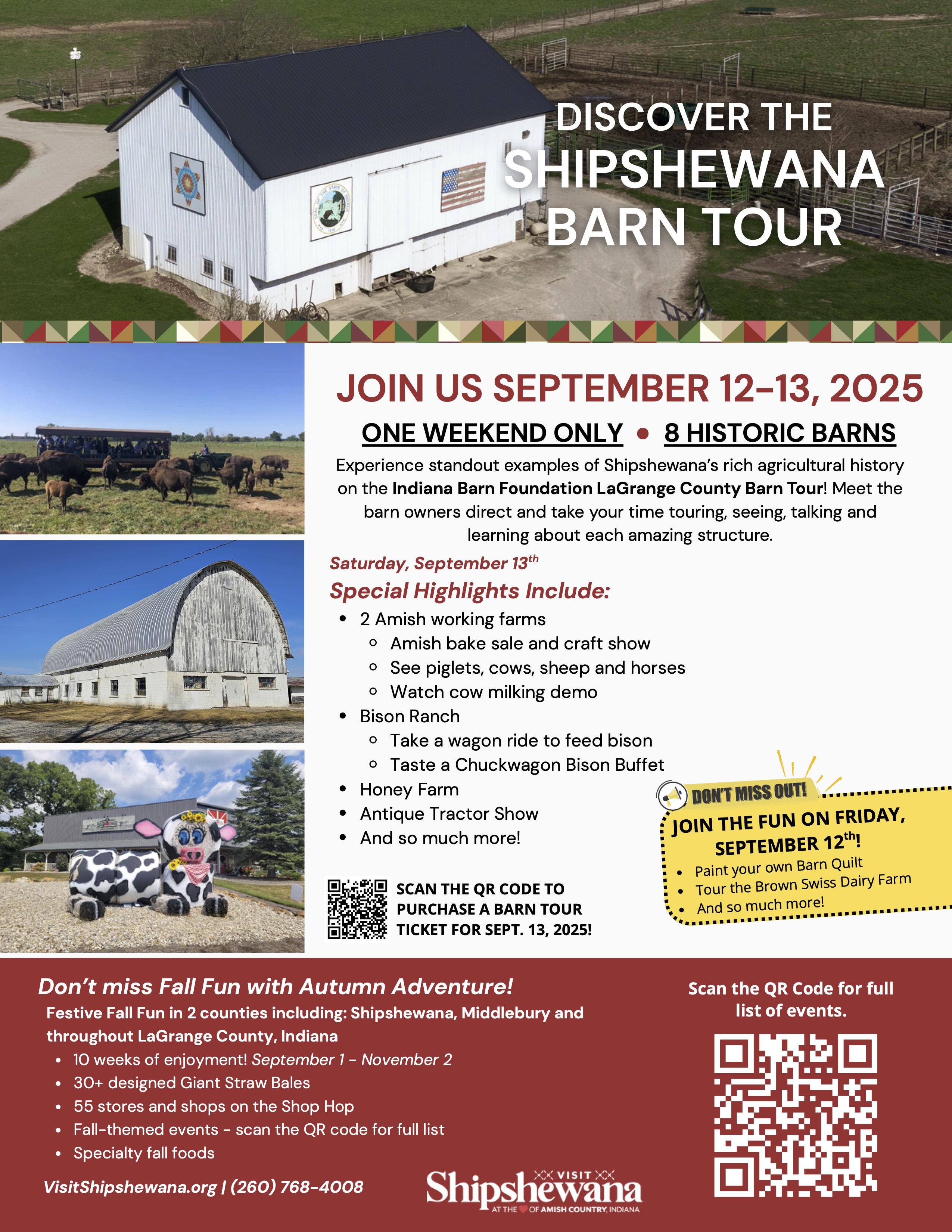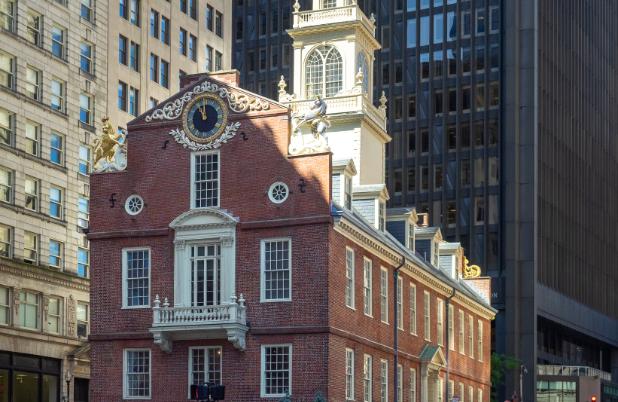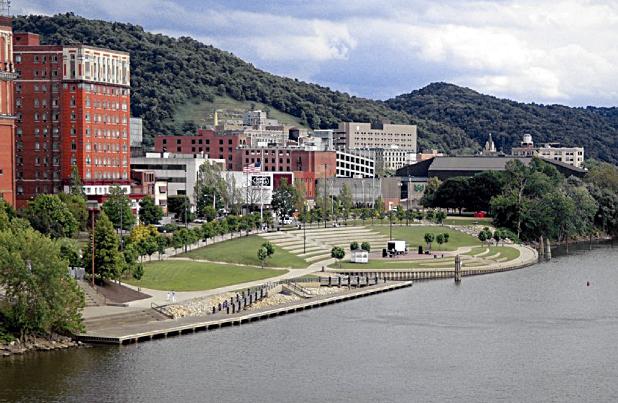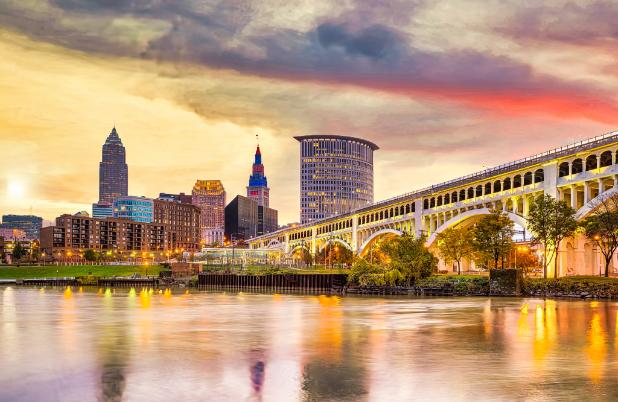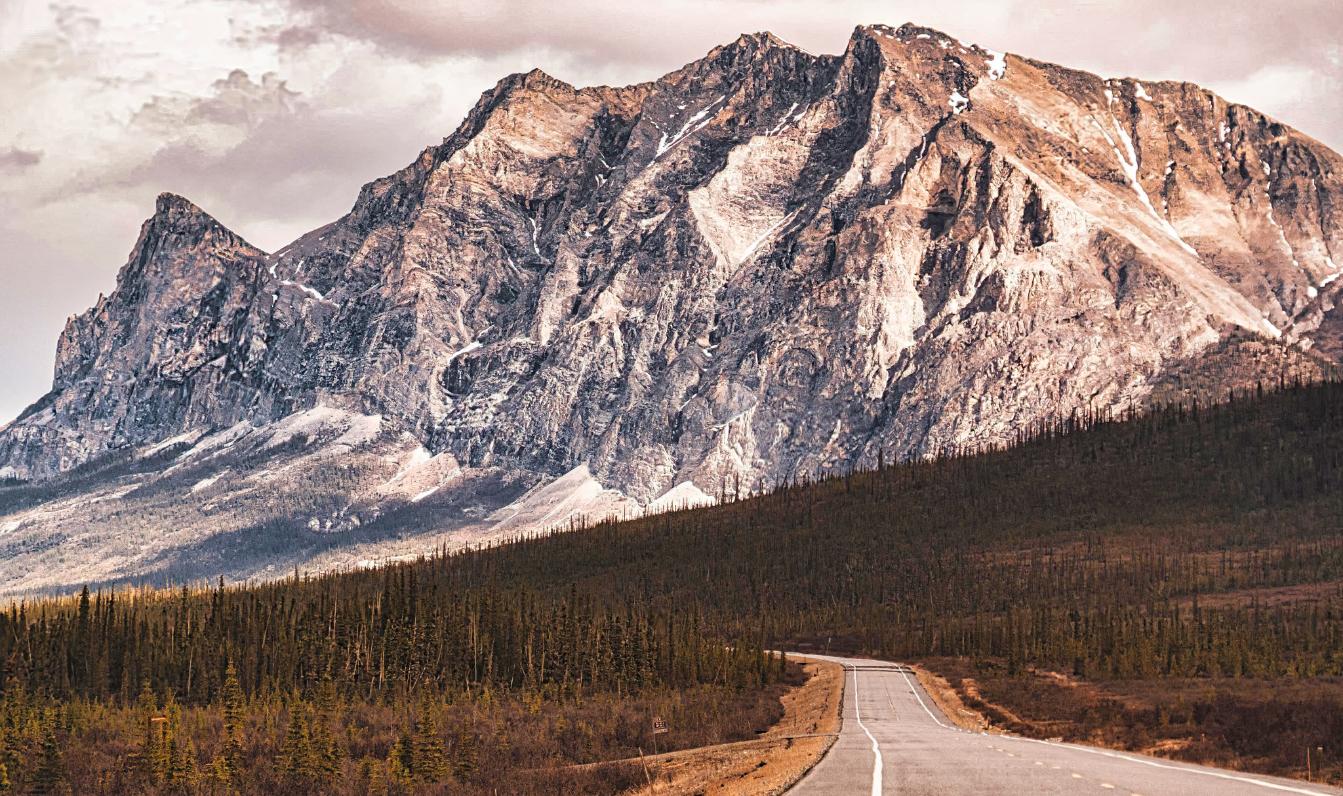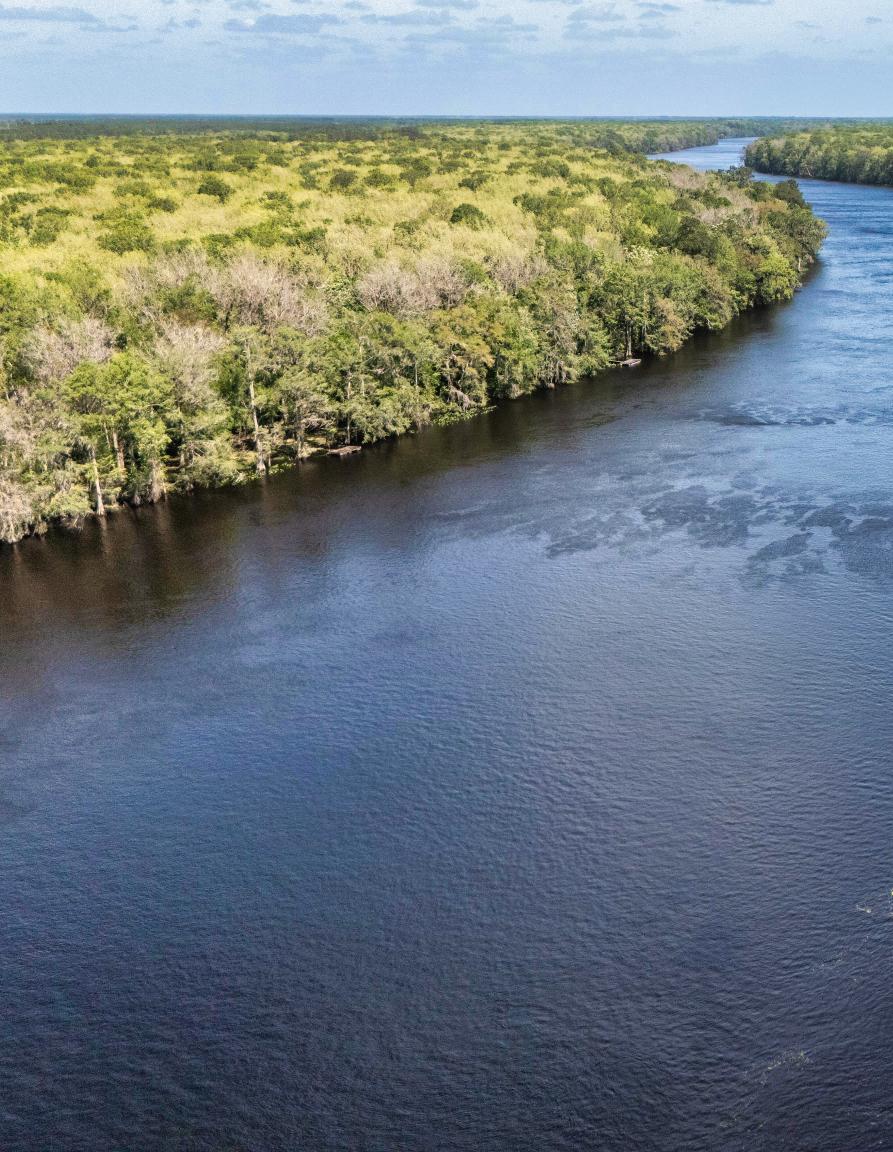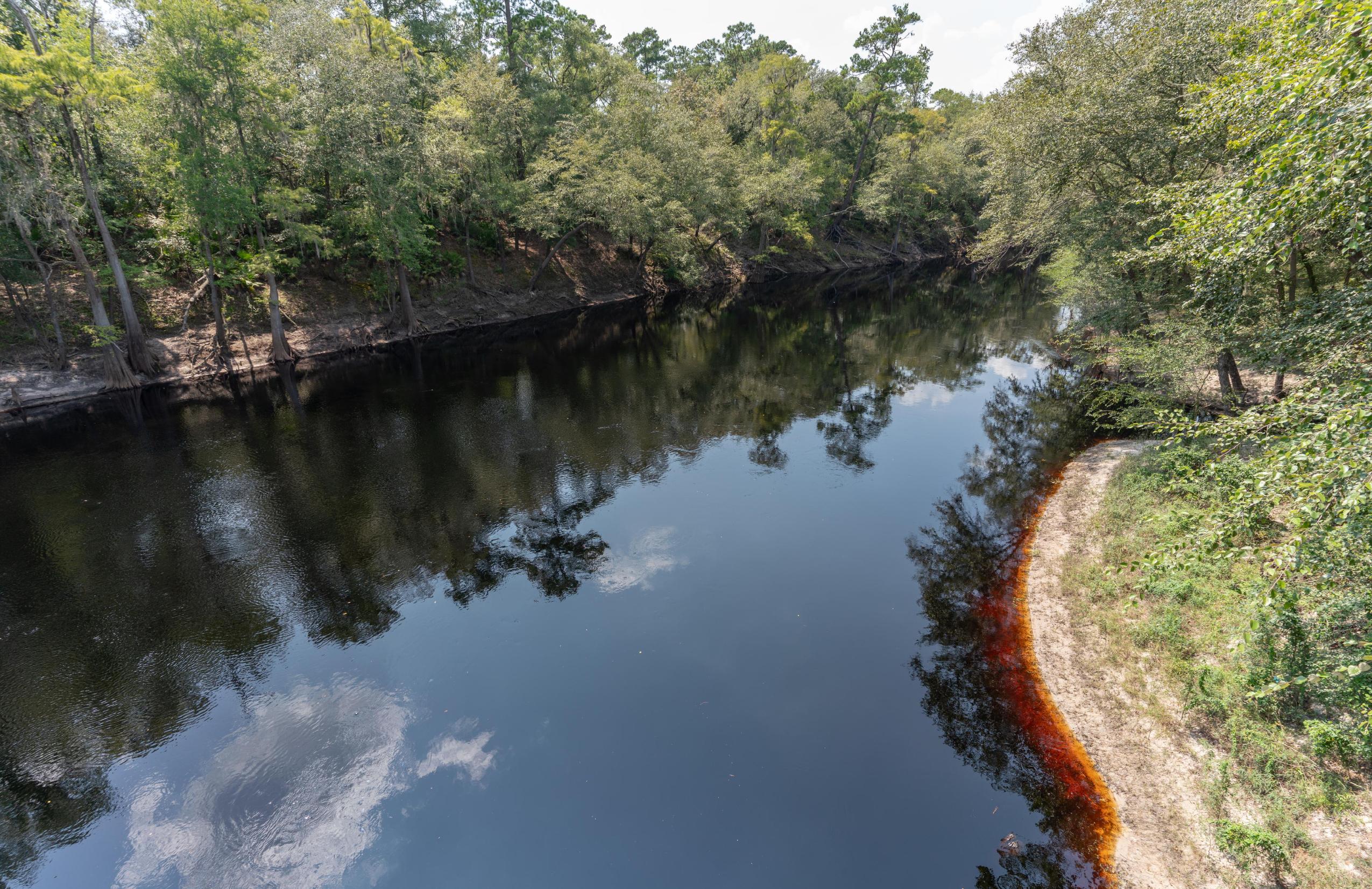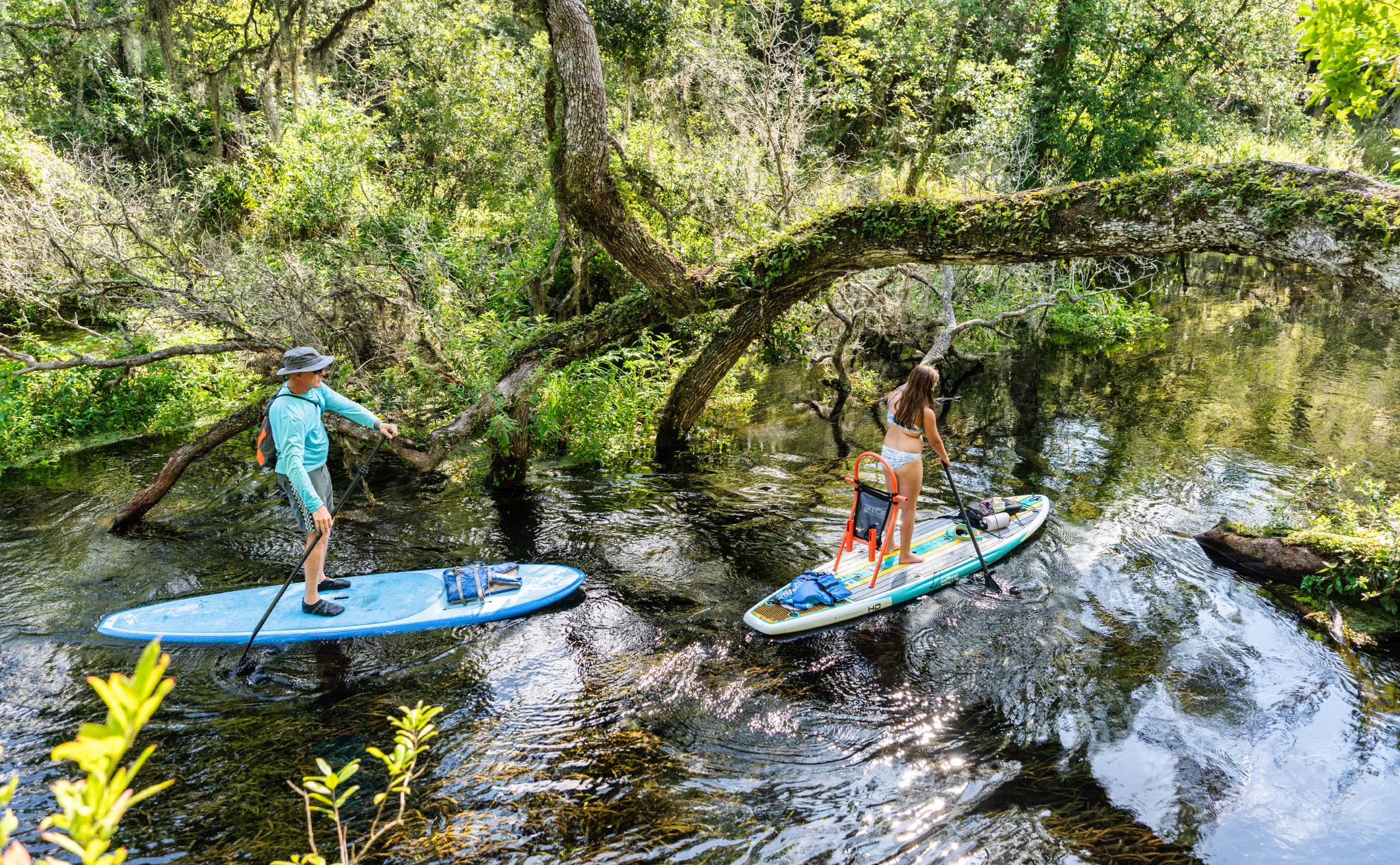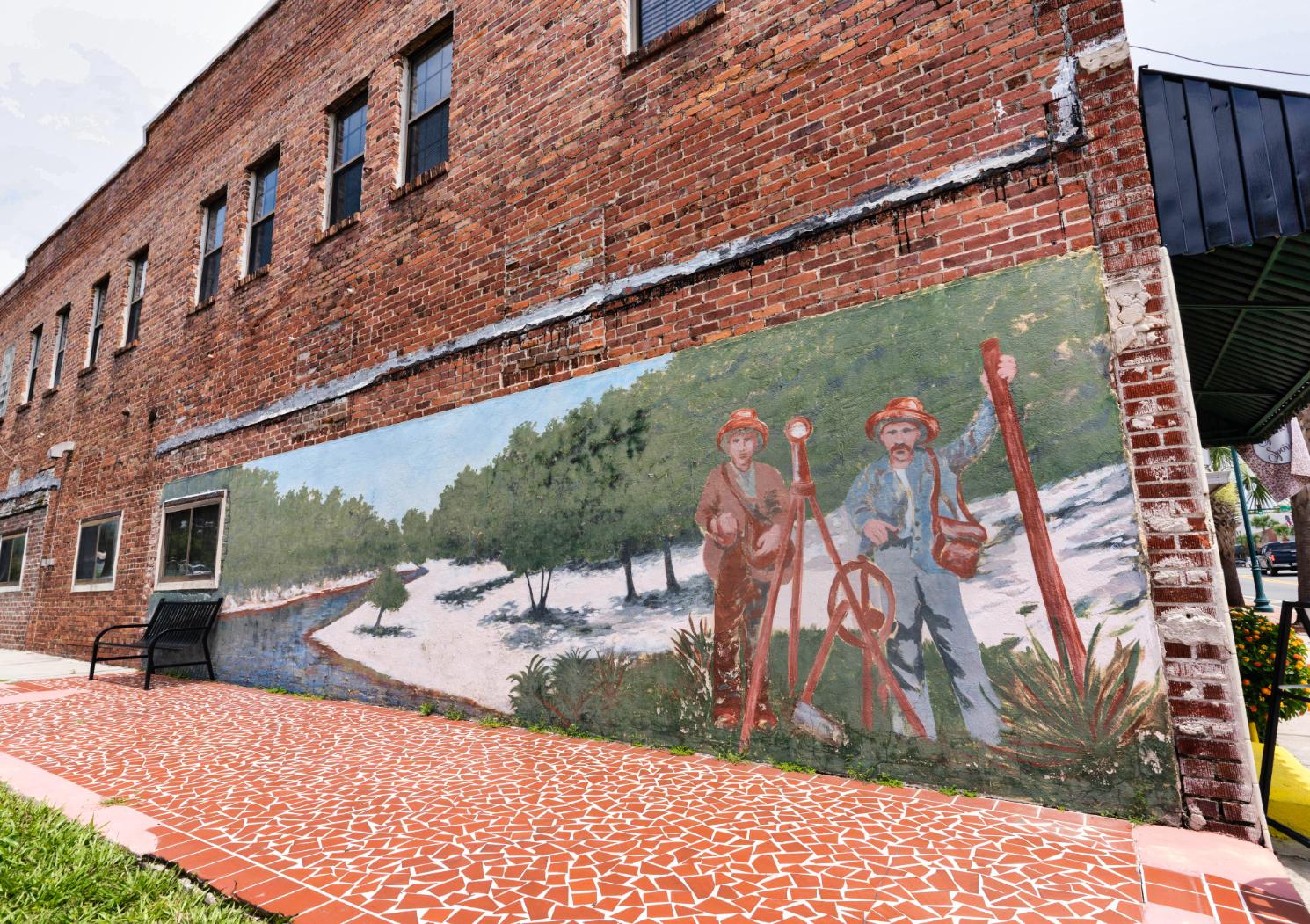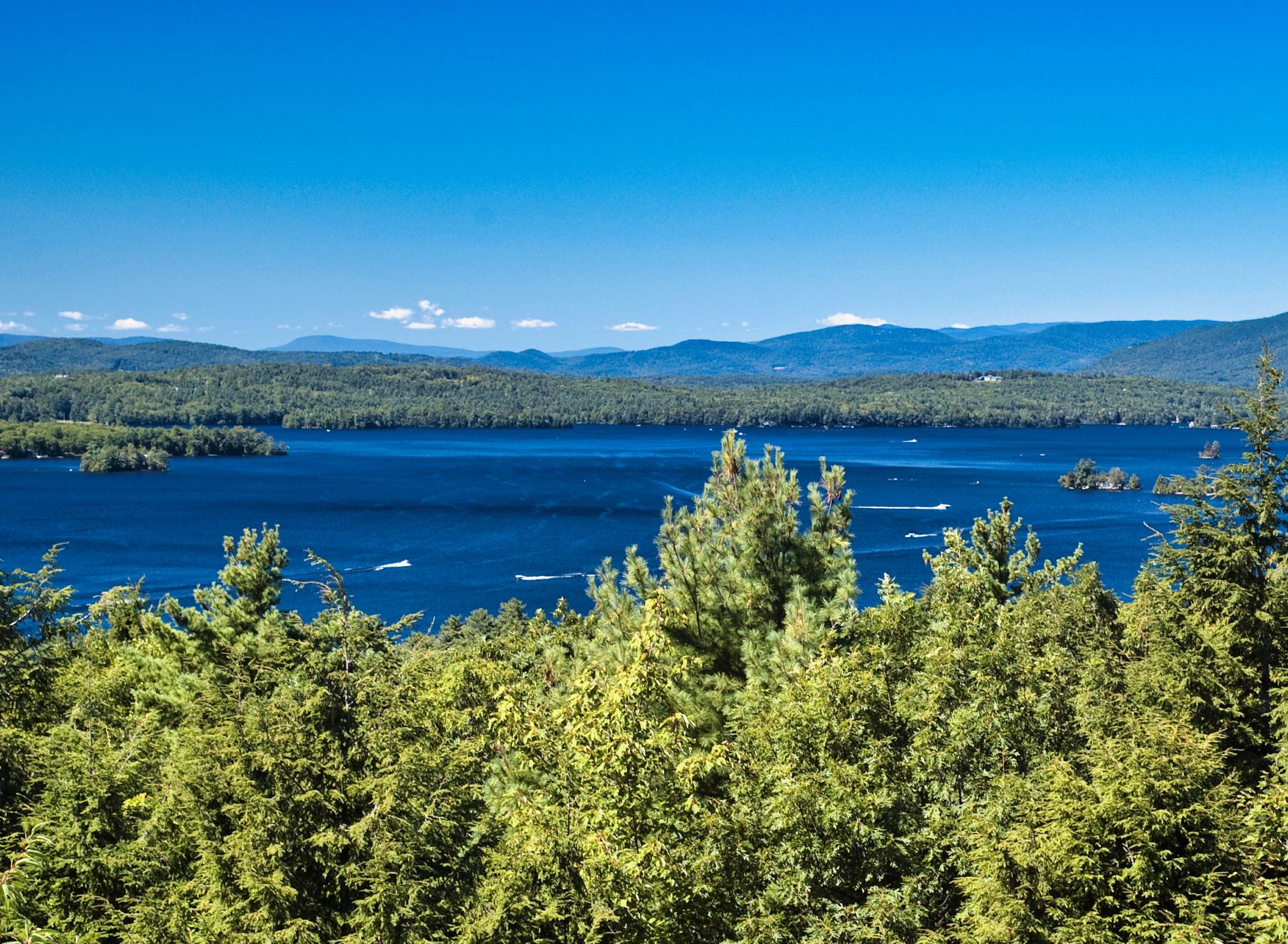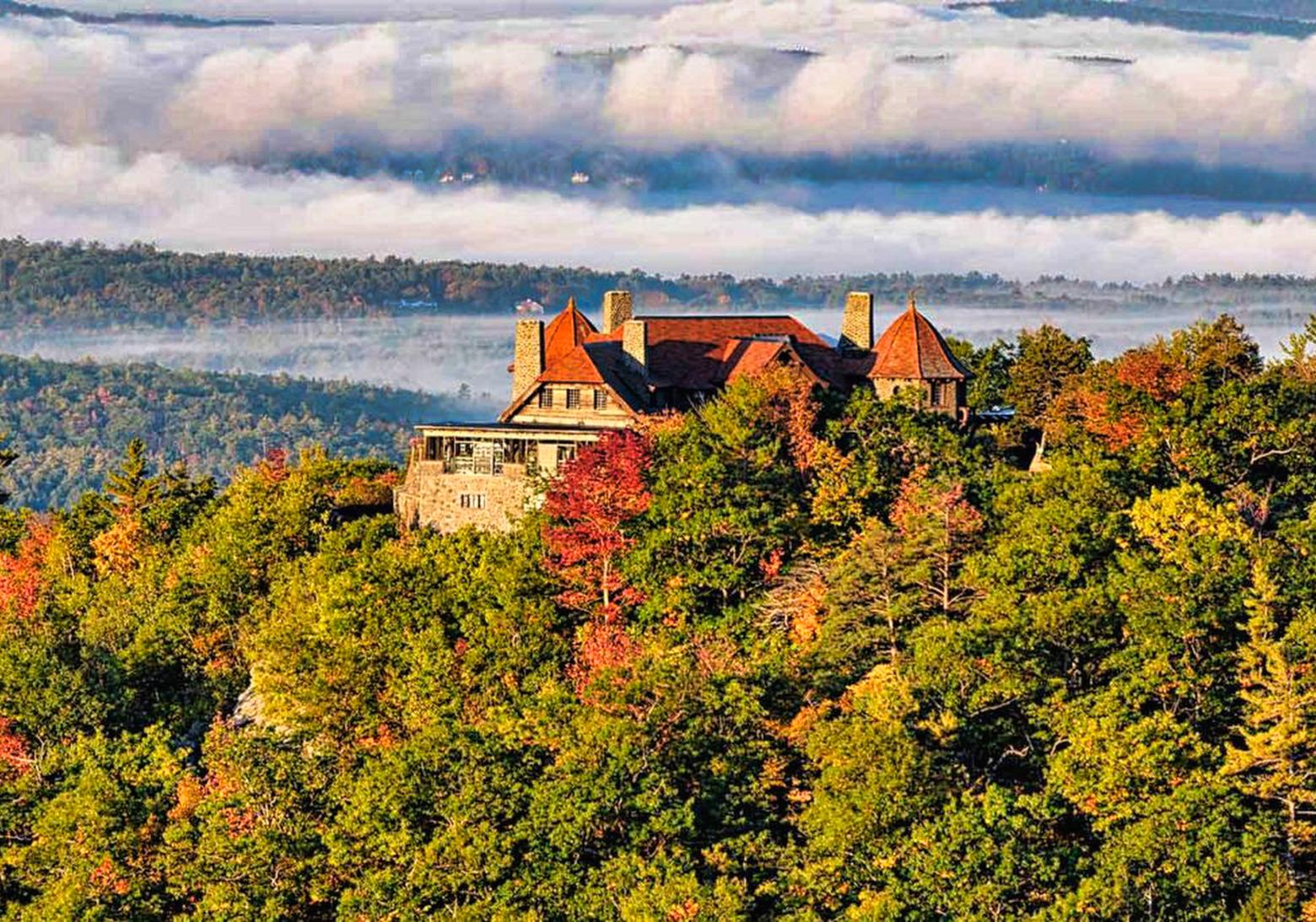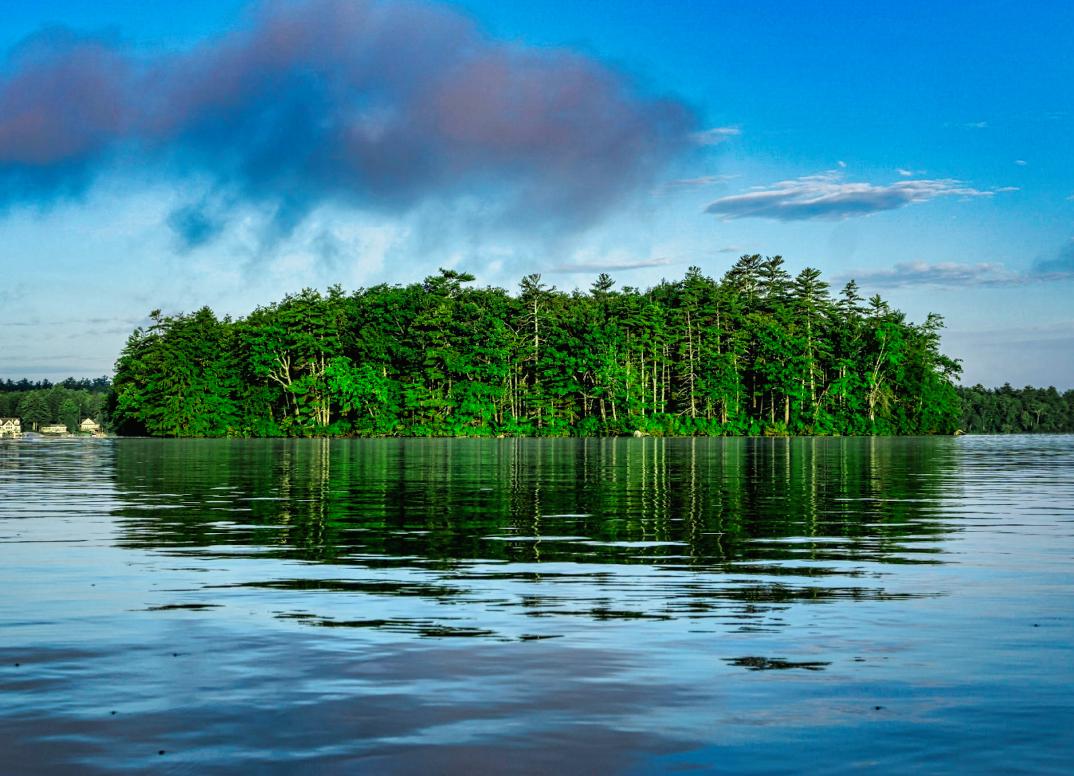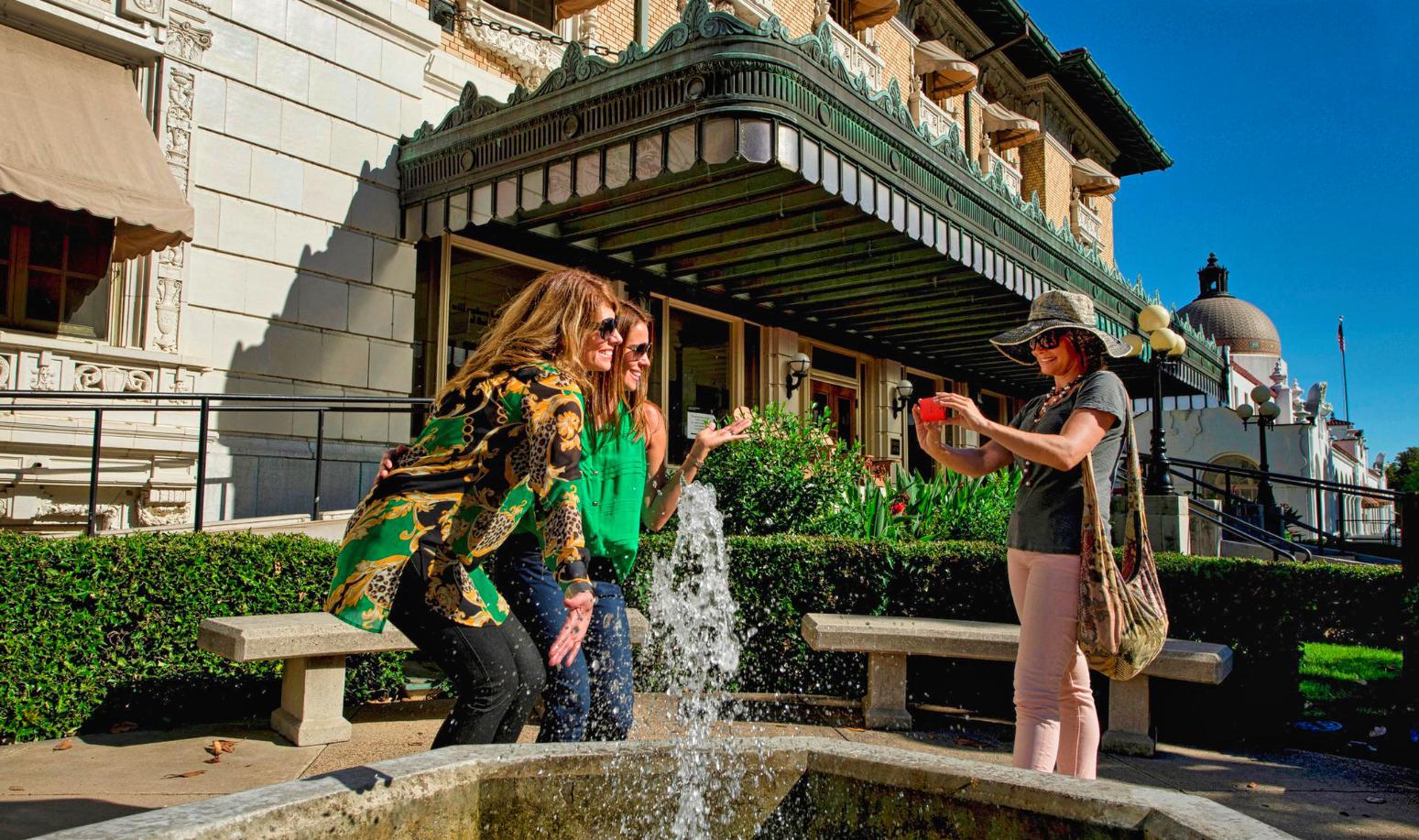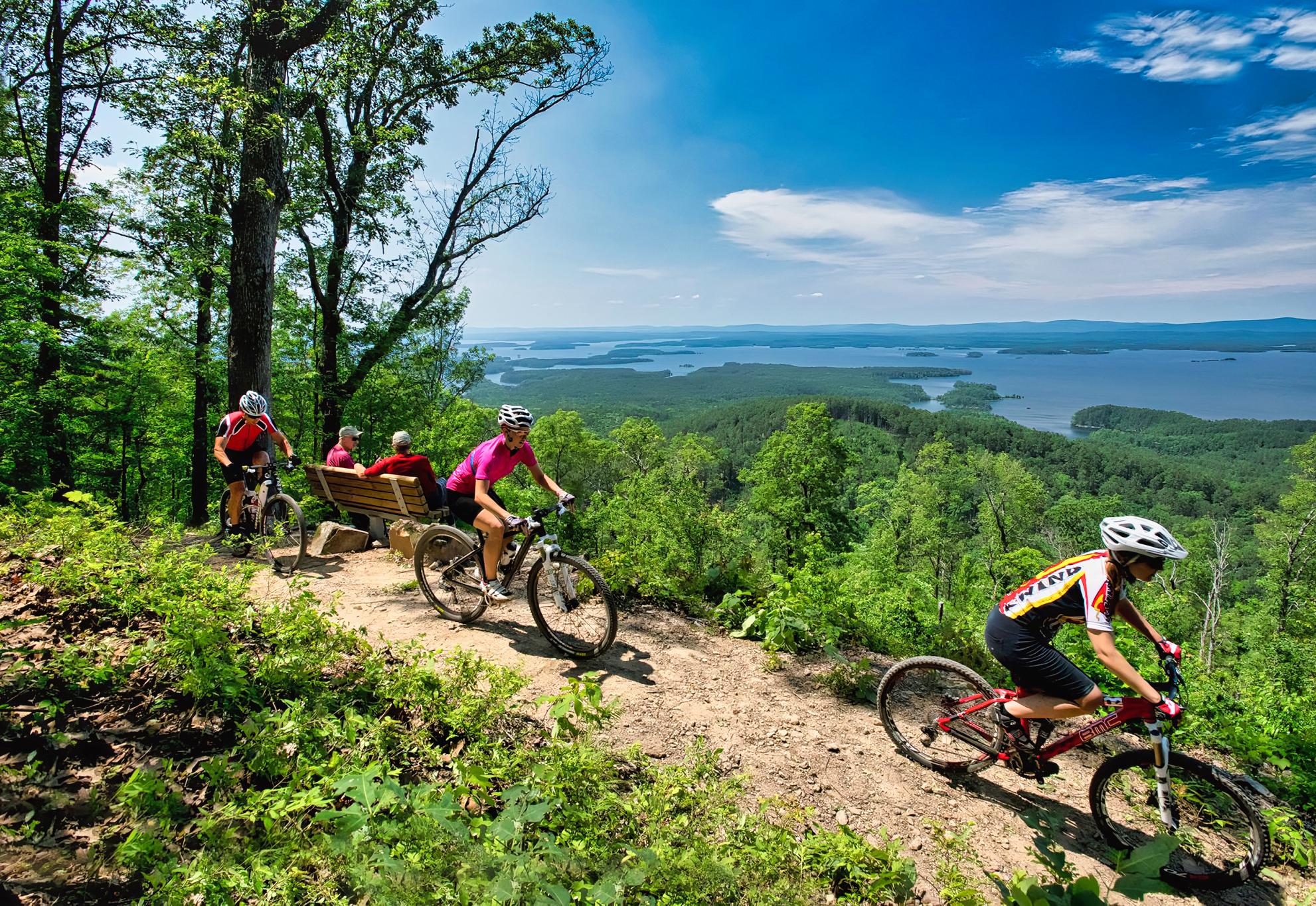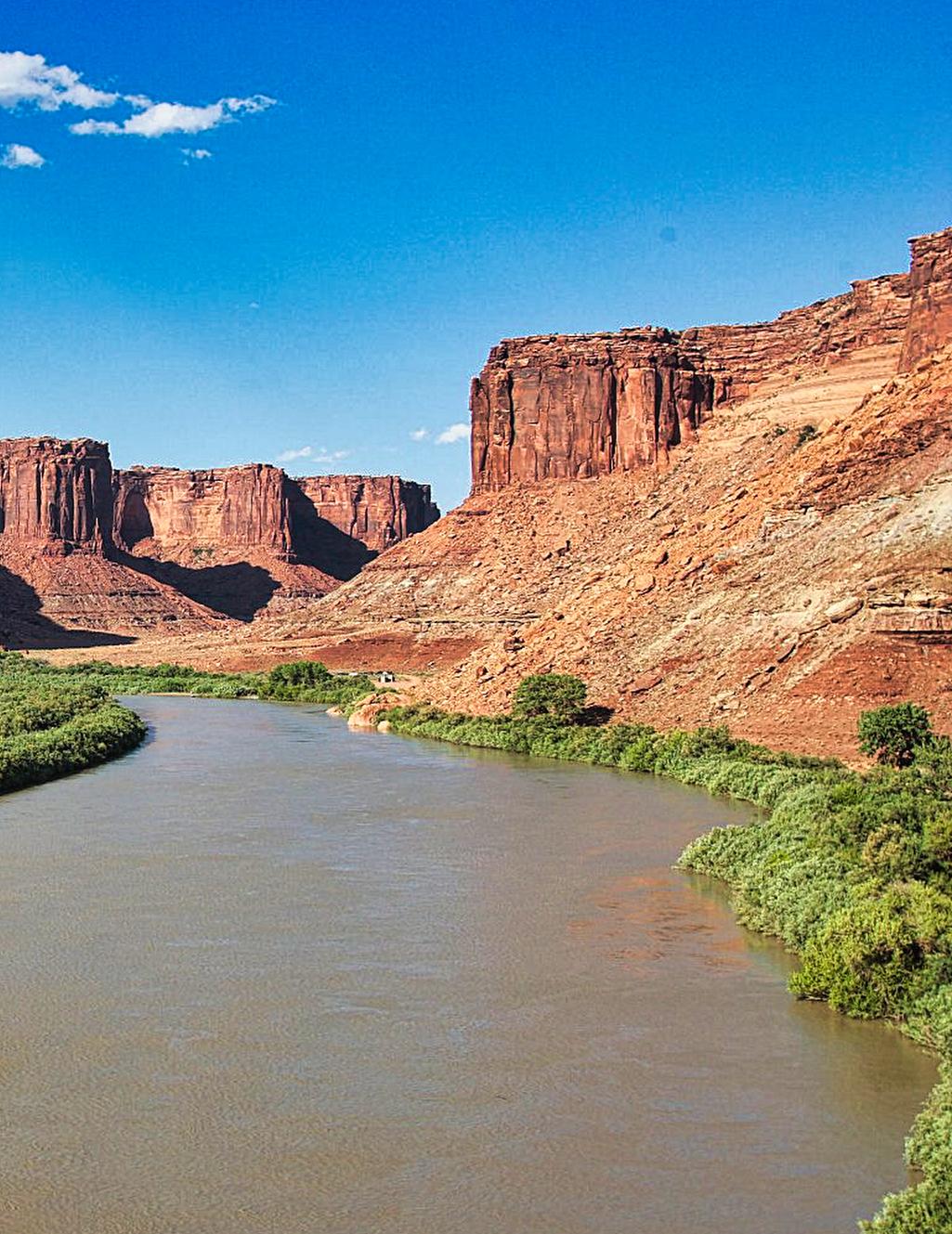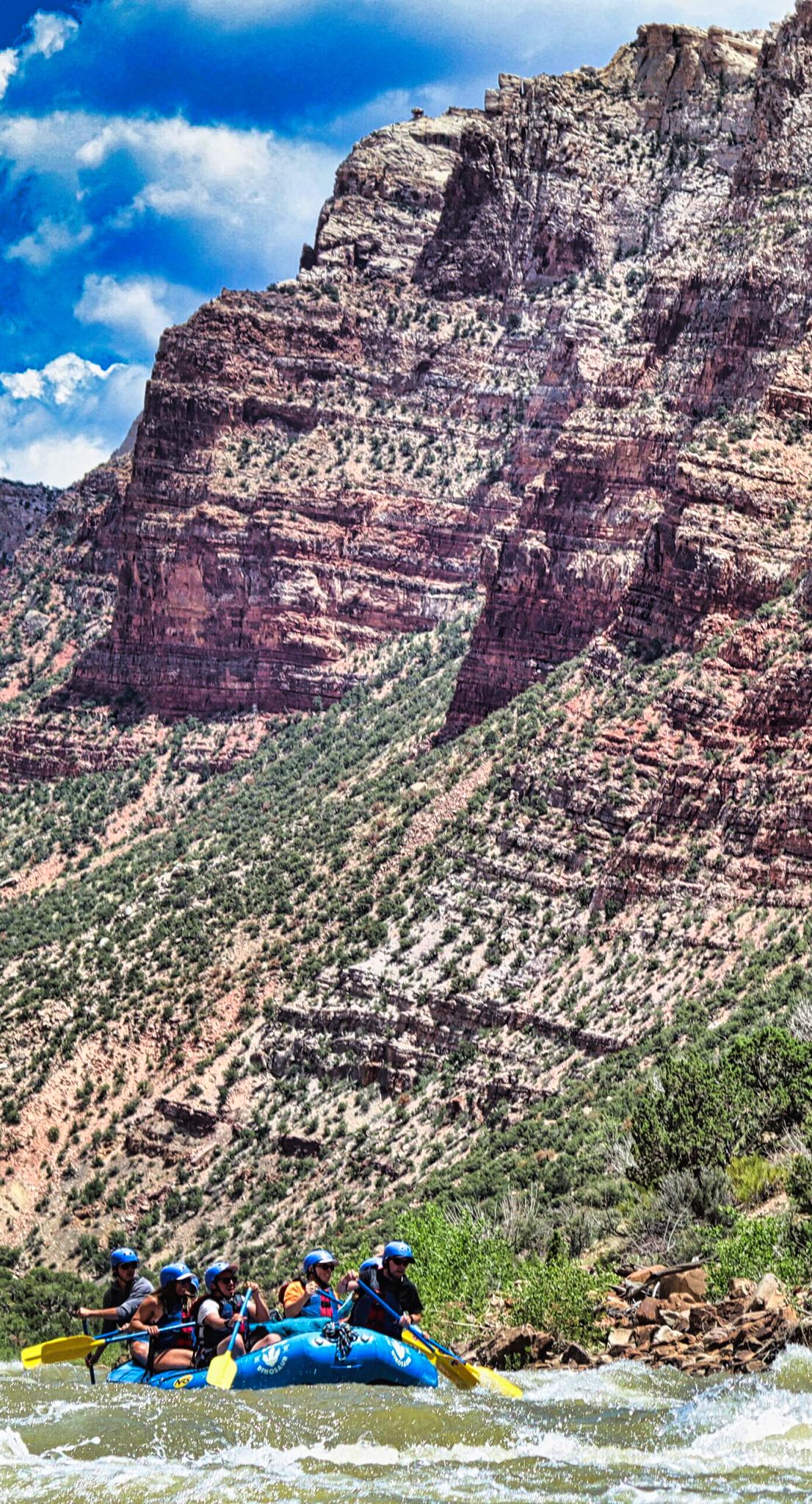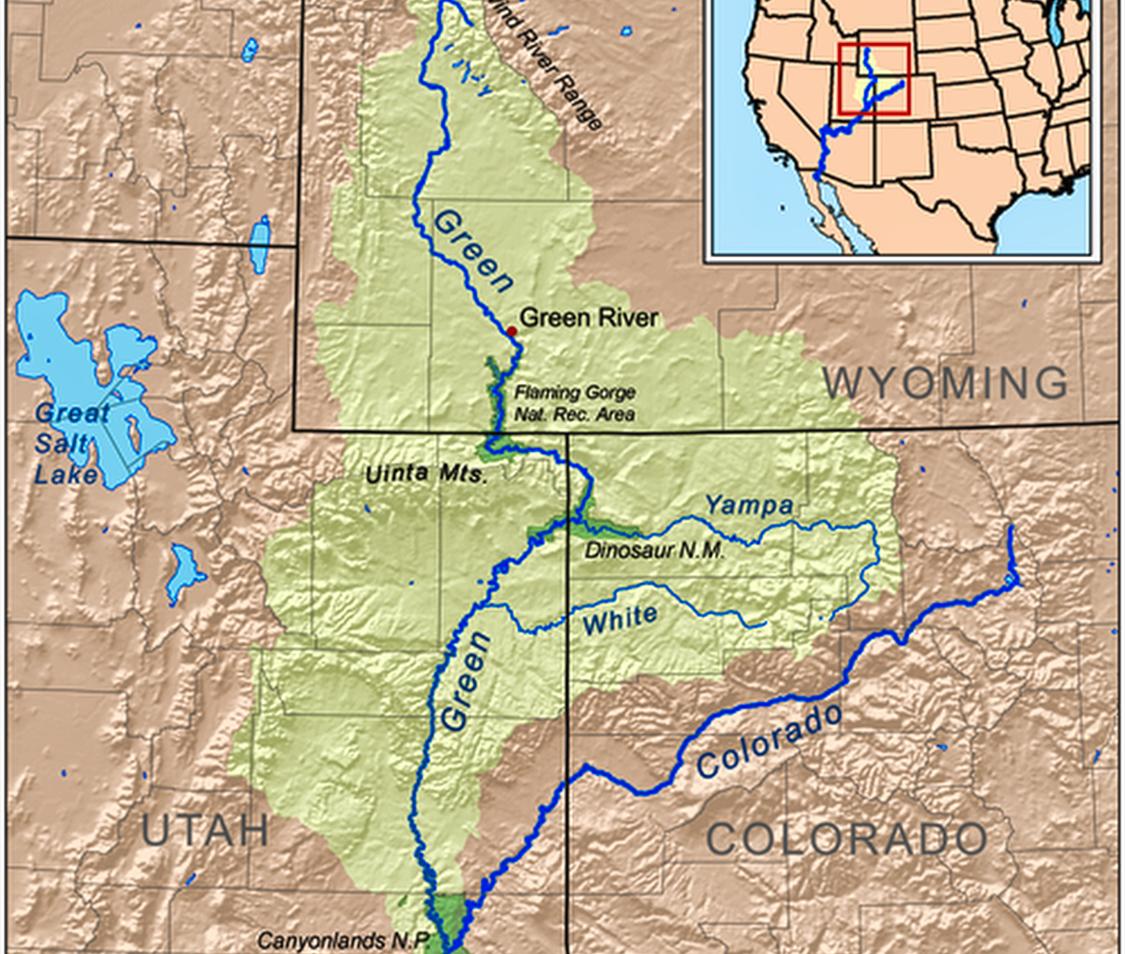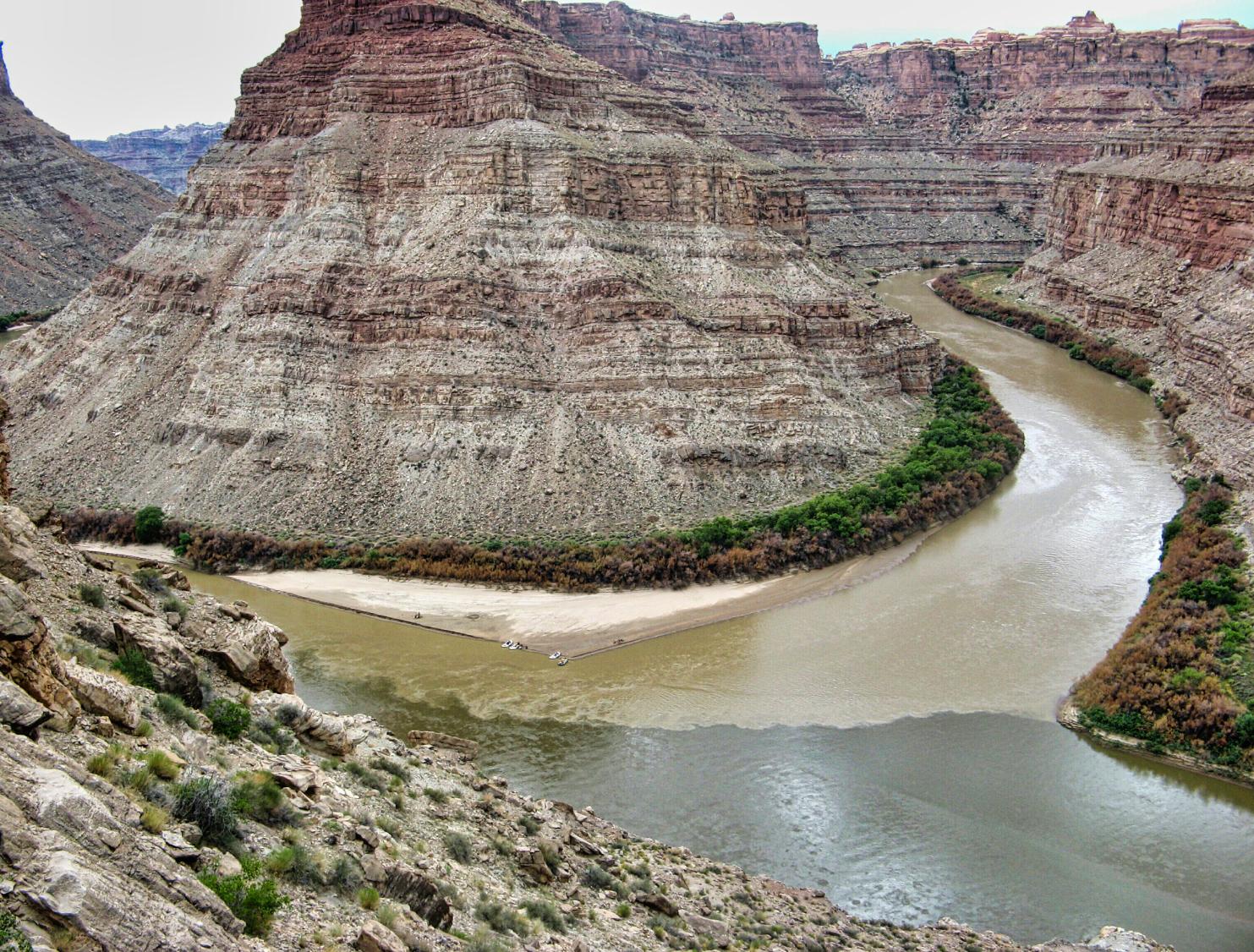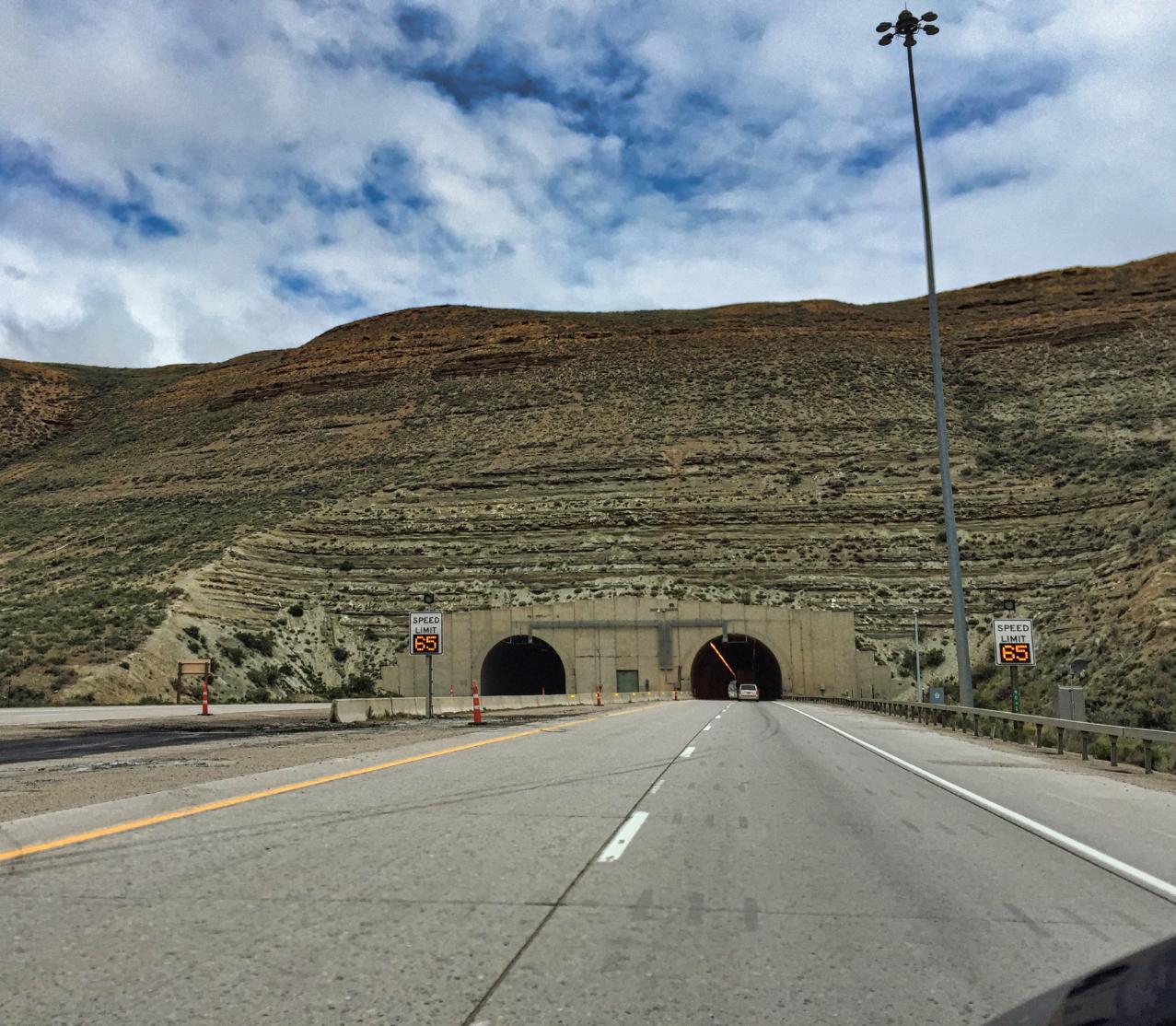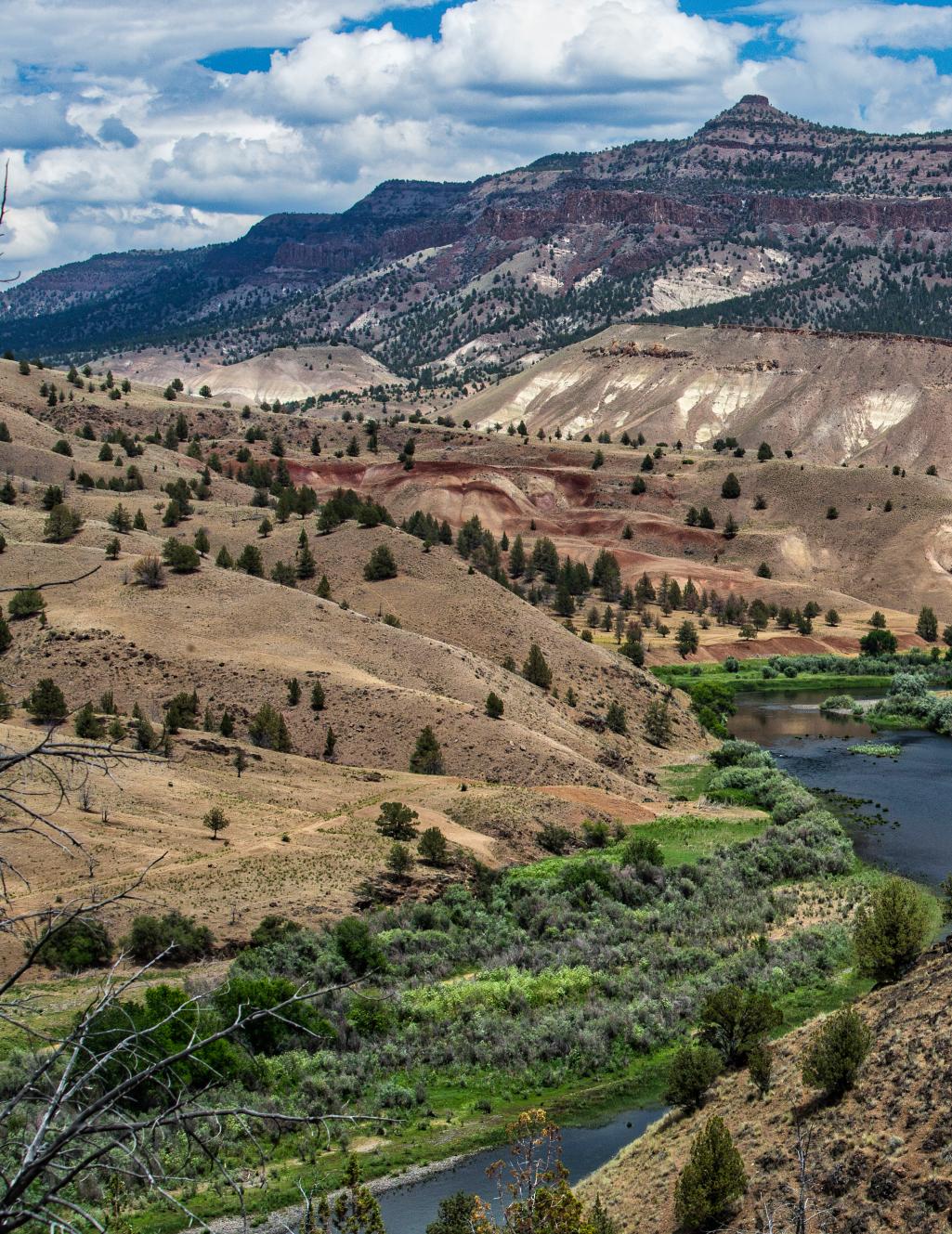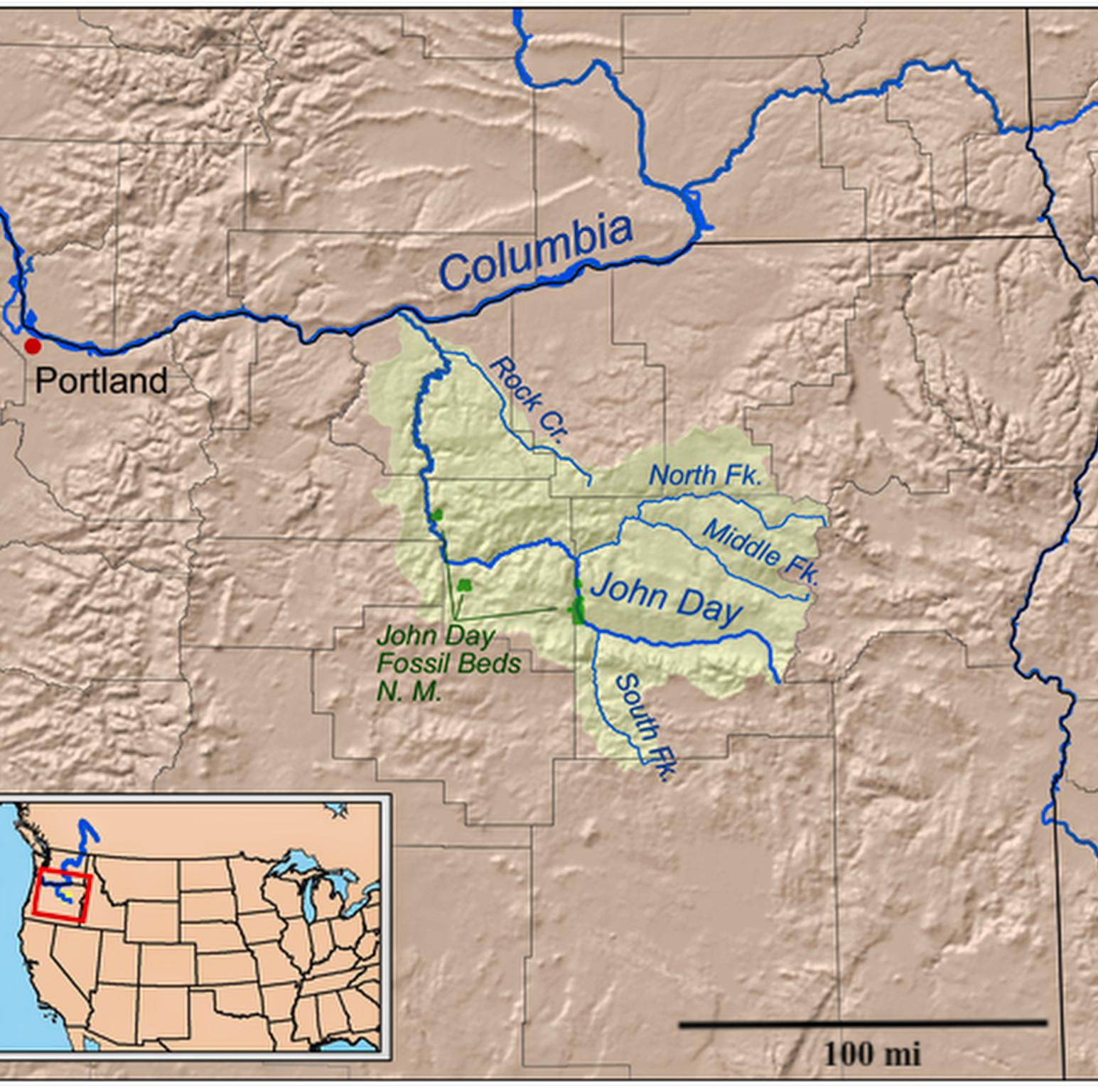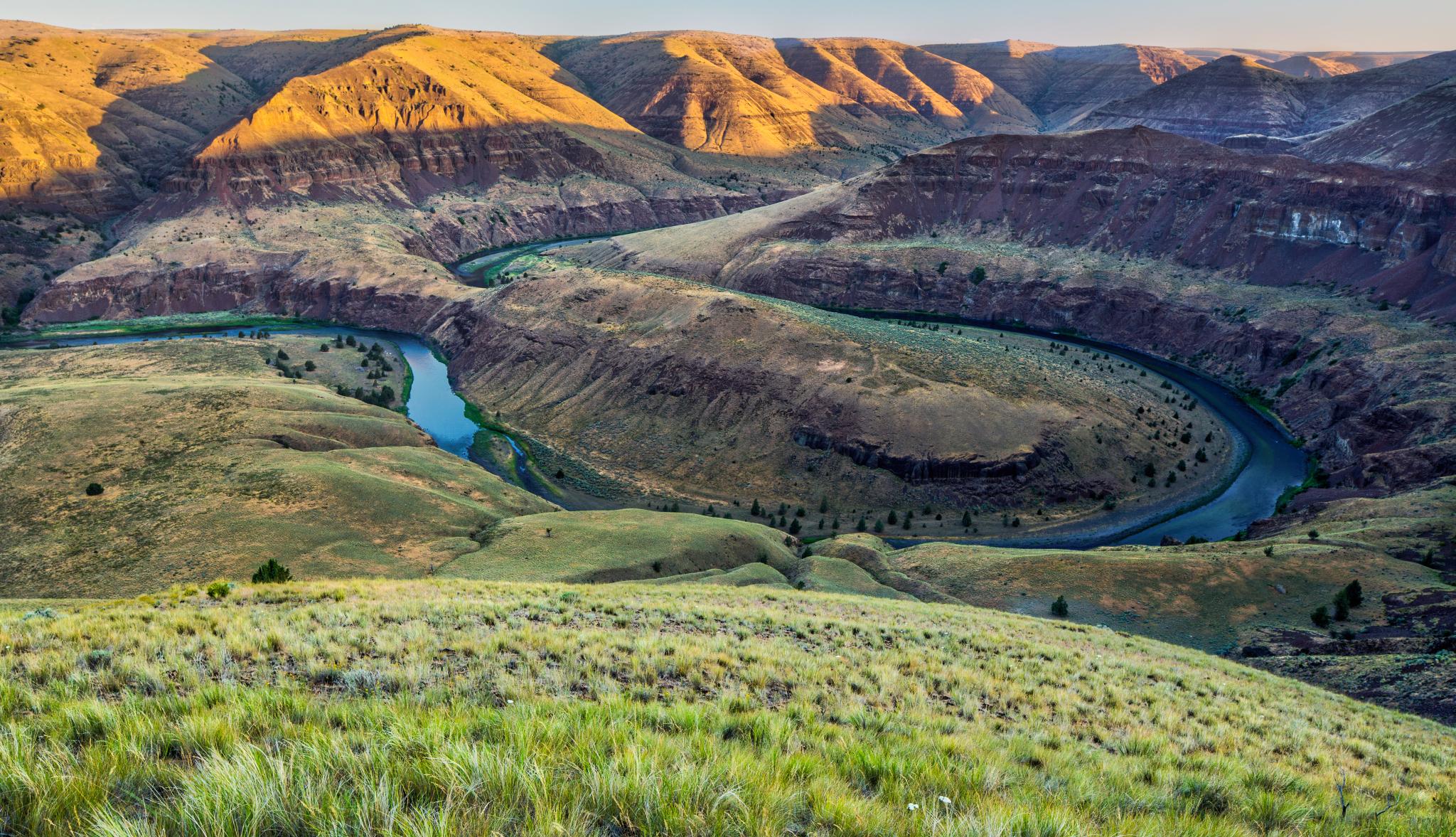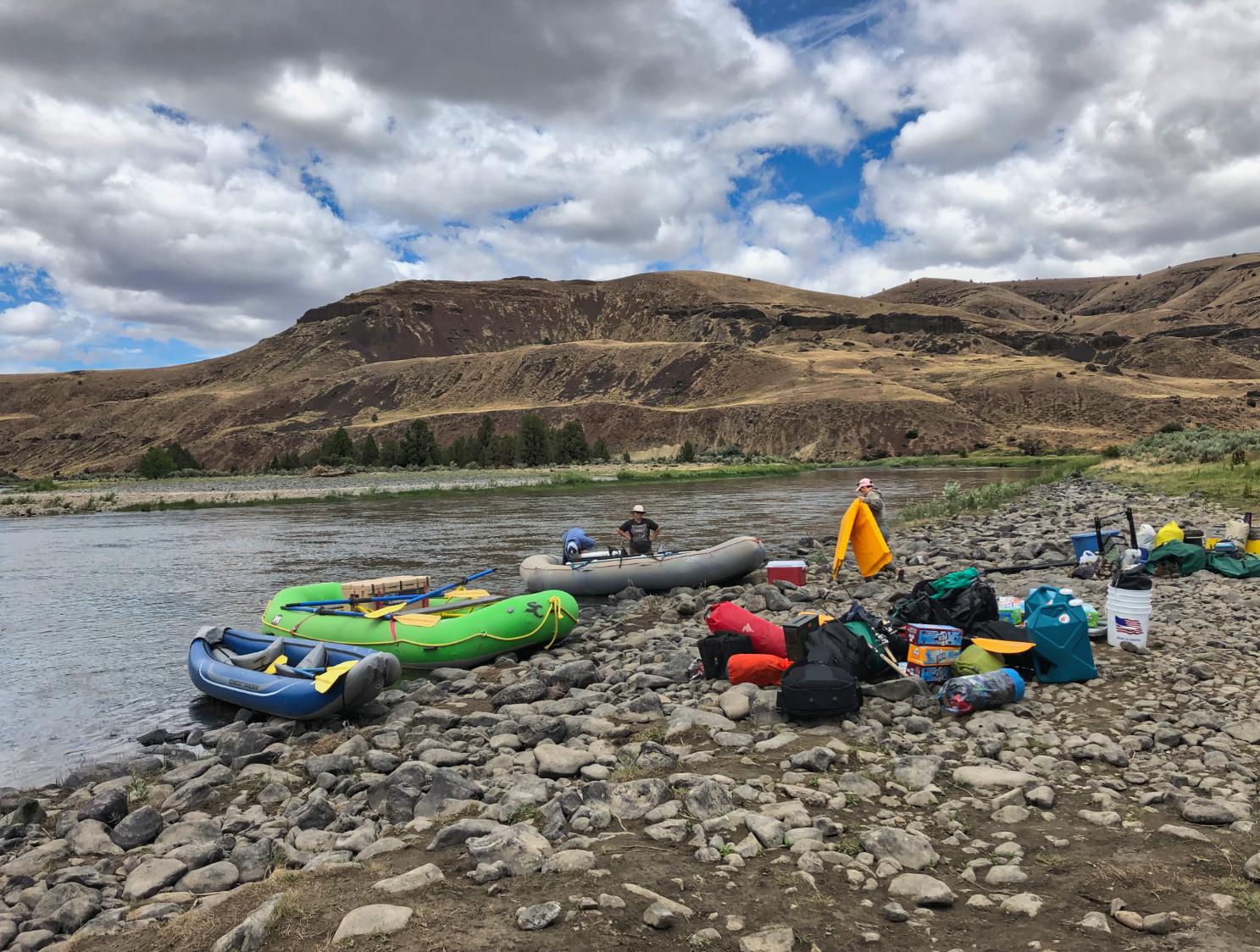Preview
ByStephenKirchner,Editor&Publisher
forts,andtheindustrialriseof riverfrontcities.Today, visitors canenjoywalkingtrails, historicsites, and vibrantdowntowns thatreflecttheenduringlegacy of this river’s influence.
InArkansas,wediscover thewildbeautyof Lake Ouachita,tucked deepwithintheOuachita Mountains. Knownfor its crystal-clear water,nearly 1,000miles of shoreline,and 200forestedislands,this lakeis aparadisefor naturelovers and outdoor adventurers.Whether you’repaddling,fishing,or just relaxingatalakesideresort, Lake Ouachitaoffers agenuineand serene escapethatfeels miles away fromthe modernworld.
Next, wehead northto LakeWinnipesaukee,a belovedretreatin theheartof New Hampshire’s Lakes Region.With over 70 squaremiles of water,264 islands,andaring of postcard-perfecttowns,this glacier-carved lakeoffers amixof outdoor recreation and old-fashioned fun. Fromscenicboatcruises to family-friendly festivals,Winnipesaukeeis atimeless destinationthatspeaks togenerations of summer vacationers and curious explorers.
FromNew England,wejourneytotheMidwestand follow thecourseof theMaumeeRiver,a137-mile waterway thatflows fromFortWayne,Indiana,to MaumeeBay inToledo, Ohio.Alongits banks are stories of early NativeAmericansettlements,frontier
Byways 4
OutWest,wefollow theruggedpath of theGreenRiver,amajor tributary of theColoradoRiver.Flowingfor morethan700miles fromWyoming to Utah,theGreen River slices through red-rock canyons,remotewilderness, andclassicWesterntowns. It’s a dreamroutefor roadtrippers and grouptours lookingto discover the ancientlandscapes andbig-skybeauty thatdefinetheAmericanWest.
Next, weheadtoeasternOregonto exploretheJohnDayRiver, the longestundammedriver inthePacific Northwest.Windingthroughfossilbeds, frontier towns,andhighdesertcanyons,theJohnDay is a hiddengemthattells thestory of Oregon’s prehistoric pastandpioneer spirit.
In What’s Happening,theNationalParkServiceis marking the75thanniversaryof LakeMead National RecreationArea,aplacewherewater and desert landscapes meetin oneof themostsurprisingand sceniccombinations in theAmericanSouthwest.
This issueinvites youto takethescenicroute–along rivers,across lakes,andintolandscapes wherenature andhistoryflow together.
On the Cover. Sunset over Lake Winnipesaukee paints the sky in warm hues as calm waters reflect New Hampshire’s natural beauty. Photo courtesy Michelle Moody on Unsplash. See story page 16. For more on Rivers and Lakes, turn to page 10.
Suwannee River: Southern Spirit, Scenic Beauty, and Songbook Fame ..........................................10
Lake Winnipesaukee, Classic New England Charm on the Water......................................................16
The Mighty Maumee: A Journey Through Ohio's Historic Waterway...................................................22
Lake Ouachita: Island Adventures and Natural Bliss in Arkansas.......................................................28
The Green River: A Journey Through the West’s Rugged Heart.........................................................34
John Day River, Journey Through Oregon’s Fossil-Filled
What’s Happening
Right.America’s most dangerous road. The Dalton Highway winds toward the dramatic peaks of the Brooks Range in Alaska’s remoteArctic wilderness.
Photo courtesyAmanda Mitchell.
TheSuwanneeRiver winds gentlythrough southernGeorgiaandnorthernFlorida,weaving together centuries of naturalbeauty,cultural history, and Southern charm.Immortalizedby Stephen Foster’s 1851 classic“Old Folks at Home,” theSuwanneeis morethanamelody–it’s aliving symbolofAmerica’s DeepSouth.For travelers who lovescenicbackroads, authenticsmalltowns,and a tasteof Floridathat’s worlds awayfromthebeaches and amusementparks, theSuwanneeoffers ajourney as tranquilas theriver itself.
Tracing the Song to the Source
The Suwannee River begins in the Okefenokee Swamp of southern Georgia, just east of Fargo, and travels over 240 miles before emptying into the Gulf of Mexico near the quiet fishing village of Suwannee, Florida.Along its route, the river forms a natural corridor of dense forests, cypress groves, hidden springs, and sleepy river towns, offering a byways adventure that feels like stepping into a bygone era.
Stephen Foster, whonever actuallyvisitedtheriver, chosethename“Suwannee”for thelyricalquality it
Byways 12
added tohis song.Today,theFloridaStateSong continues todraw travelers insearchof theriver’s poeticpromise–and theyfindmuchmorethan a familiar tune.
White Springs: A Gateway to the River
Just south of the Georgia border lies the historic town of White Springs, one of the oldest tourist destinations in Florida. Once known for its mineral-rich waters and healing springs, the town is now a cultural hub that embraces its riverside heritage. At the Stephen Foster Folk Culture Center State Park, visitors can explore exhibits on Florida folklore, folk art, and, of course, the composer himself.A 200-foot carillon bell tower plays Foster’s songs daily, echoing through the oaks and pines like a call from the past.
WhiteSprings is also agatewayfor paddlers,hikers, and cyclists looking toexploretheSuwanneeRiver WildernessTrail. Outfitters intownprovidekayaks and canoes,whilenearby trails offer access tothe riverbanks and forestedbluffs.TheSuwanneeRiver Visitor Center provides maps,wildlifeinformation, and helpfulstaff to pointtravelers intheright direction.
Live Oak and the Spirit of the Suwannee
Heading south along U.S. Route 129 or State Road 51, travelers reach the city of Live Oak – home to the Spirit of the Suwannee Music Park. This 800-acre riverside venue is known for hosting major bluegrass, country, and folk music festivals throughout the year, including the Suwannee River Jam and Magnolia Fest. With campgrounds, hiking trails, and a general store, it’s a popular stop for motorcoach tours and RV travelers alike.
LiveOak also offers apeekintolocallifewithantique shops,friendly diners,andalaid-backSouthern atmosphere. Stop in for asliceof pieatBigWood BBQ and Grillor grabahomemadesandwichatthe DixieGrill,wherelocals haveswappedstories over coffeefor generations.
Byways 14
Springs, Parks, and a River Full of Surprises
One of the most magical features of the Suwannee is its collection of over 200 freshwater springs – the highest concentration anywhere in the United States. Many of these springs are accessible via short
detours off Suwannee-area byways, and several are found in the stunning Ichetucknee Springs State Park.
Here,thecrystal-clear Ichetucknee River joins theSuwannee,and visitors can floatthroughshaded hammocks in inner tubes or paddle alongsidefish, turtles,and otters in pristinewaters.
Other must-seesprings include LafayetteBlueSprings,Troy Springs, and Fanning Springs –all offering swimming areas, picnic spots, and old-fashionedFlorida charm.Theseparks arewellequipped for group tours,with facilities for both daytrips and overnightstays in nearby towns like MayoandBranford.
Old Florida in Branford and Bell
Further downriver, travelers will discover the towns of Branford and Bell, often called the “Spring Hopping Capitals of the Suwannee”. These quiet communities are perfect for travelers looking to slow down and enjoy unspoiled natural surroundings. The roads here are lined with moss-draped oaks, fields of wildflowers, and river views that never get old.
Branford is aparticularlygoodbasefor exploringthe Lower Suwanneeregion. Localoutfitters like SuwanneeGuides andAdventures offer pontoon boattours,naturewalks,and eco-friendly paddlingtrips.For lunch, trySisters Cafeor theBranford Gathering,wherehomecookingis a pointof pride.
The Gulf Coast Finale: Suwannee
As the river nears its mouth, it winds through the Lower Suwannee National Wildlife Refuge—an expansive preserve of marshlands, hardwood forests, and tidal estuaries. This is a birder’s paradise, with sightings of swallow-tailed kites, herons, and even the occasional bald eagle.
Theriver’s journeyends in thefishing villageof Suwannee, Florida–atiny
townwith abigheartanddirectaccess tobothriver andGulf.It’s apeacefulplace,idealfor sunsetviews, seafood dining, andafeelingof completeescape.
Suwannee’s few marinas andseafoodshacks servethe catchof theday–thinkblackenedgrouper, shrimp po’boys,and hushpuppies servedwith stories from locals who’vefishedthesewaters for decades.
A River Full of Rhythm and Roadside Stories
What makes the Suwannee River such a rewarding byways destination isn’t just the scenery – it’s the way the river has shaped the culture, cuisine, and cadence of life around it. From the ballads of Stephen Foster to the bluegrass festivals under starry skies, from misty morning springs to sleepy Southern diners, this river tells a story that’s as much about people as it is about water.
Travelers whofollow theSuwannee’s winding path won’tjustdiscover aplace–they’llfeelarhythm. It’s therhythmof oldsongs andnew stories,of paddles dippingin water,of tires hummingon scenic backroads.It’s ajourney throughaquieter Florida, wherethespiritof theSouthflows strong andsteady.
Sonexttimeyou hear “Way down upon the Suwannee River,”don’tjusthumalong–pack abag,hittheroad, andfollow thatmelody intotheheartof oneof America’s mostsoulfulwaterways.
https://www.visitflorida.com
Nestled in theheartof New Hampshire’s Lakes Region, LakeWinnipesaukeehas long captured theimaginationof travelers insearch of tranquilbeauty, outdoor recreation,andoldfashionedlakesidefun.
Spanningover 70 squaremiles,this glacier-carved lakeis thelargestin theGraniteState,dottedwith264 islands andringed by postcard-worthytowns and mountain views.
ANativeAmerican wordbelievedtomean“Smileof theGreatSpirit”, LakeWinnipesaukeehas beena summer retreatfor generations.Fromsteamboat cruises to fishing excursions,coveredbridges to antiquearcades, thelakeblends scenicserenitywith classicAmericana. It’s no wonder families returnyear after year – and whyfirst-timevisitors oftenbecome lifelong fans.
Byways 18
Meredith, Wolfeboro, and the Towns Along the Shore
The lake’s shoreline is dotted with charming towns that each offer a unique slice of New England character. On the western side, Meredith has transformed from a mill town into a bustling, walkable village with art galleries, upscale inns, and lakefront dining.Arestored train depot and a sculpture walk add extra personality.
Totheeast,Wolfeboroproudlyclaims thetitleof “OldestSummer ResortinAmerica”.Withits historic Main Street,vintagesodafountain, andtheWright MuseumofWWII History,thetownoffers arich blendof nostalgiaandlocalpride.Wolfeboro’s longstandingtraditionof summer cottages, boating,and culturalevents keeps itlivelywhilepreservingits timeless charm.
Other noteworthycommunities includeAltonBay,a scenicgatewayatthelake’s southerntip;Center
Harbor,hometo antiqueshops andhiddenbakeries; and Laconia, theregion’s largestcity,whichhosts BikeWeek, oneof theoldestmotorcyclerallies in the country.
Boating, Beaches, and the Call of the Islands
Lake Winnipesaukee is a boater’s dream. Whether you’re captaining your own craft or enjoying a guided cruise, there’s no better way to experience the lake than from the water. The M/S Mount Washington, a beloved passenger vessel since 1872 (today’s version was launched in 1940), offers narrated cruises with dinner and live entertainment onboard, connecting several lakeside towns during the summer season.
Publicboatlaunches,sandy beaches, and kayakrental stations areavailableallaround thelake, withWeirs Beachin Laconiaoffering aclassic boardwalk experience.Think cotton candy, bumper cars,and
anold-fashionedarcaderightnexttoasandy swimmingbeach.
Thelake’s manyislands areidealfor exploring,and manyarereachablebyboator ferry.Someoffer primitivecamping,whileothers areprivatesummer escapes.Withso many coves,inlets,and hidden channels,boaters canspenddays exploringwithout retracingtheir path.
Fishing, Hiking, and Scenic Drives
Anglers flock to the lake for smallmouth bass, lake trout, pickerel, and landlocked salmon. Ice fishing in winter is also popular, with bobhouses dotting the frozen surface as locals embrace the season. For hiking enthusiasts, nearby Mount Major inAlton offers panoramic views of the lake after a moderate climb, perfect for photography and fall leaf peeping.
Scenicdrives abound inthis region,withRoute11and Route3 tracing thelakeshoreandleadingvisitors past covered bridges, countrystores,andfarmers markets. In autumn, theseroads aredrenchedincolor,making theLakeWinnipesaukeeareaoneof New England’s best-keptfoliagesecrets.
Where to Stay and What to Eat
Accommodations range from cozy B&Bs and familyrun motels to full-service lakeside resorts. In Meredith, the Inn at Mill Falls combines comfort with rustic elegance right on the water. In Wolfeboro, the Wolfeboro Inn offers historic charm and easy access to downtown shopping and dining. For a classicAmericana stay, cabins and motor courts like the NASWAResort in Laconia channel the spirit of mid-century lake vacations.
Byways 20
Dining reflects theregion’s blendof localflavor and casualcomfort.TryLobster BenedictatWater Street Cafein Laconia, or enjoyfreshseafoodatTown Docks in Meredith, wherepicnictables andtikidrinks add tothefestivevibe.For dessert,Bailey’s Bubblein Wolfeboro is amust-stopfor hand-scoopedicecream withaview.
Localspecialties includeNew Englandclamchowder, freshwater fish, and allthings maplesyrup—from breakfasttreats to decadentdesserts.
Family Fun, Festivals, and Cultural Treasures
LakeWinnipesaukeeis especiallywelcomingto families, thanks to its widearrayof attractions.The WinnipesaukeeScenicRailroaddeparts from Meredith andWeirs Beachfor shortnostalgicrides alongthelake’s edge.
In Laconia, the FunspotArcade bills itself as the world’s largest arcade – with vintage games, bowling, and mini-golf all under one roof.
Culturalattractions includetheCastleintheClouds in nearby Moultonborough –amountaintopestatebuilt
in 1914withstunninglakeviews,hikingtrails, and carriagerides.InWolfeboro,theNew Hampshire BoatMuseumandWrightMuseumappealtoboth maritimelovers and historybuffs.
Throughouttheyear,towns aroundthelakehost festivals, craftfairs,and livemusic, especiallyduring thepeak summer season.Fromfireworks onthe Fourth of July topumpkin festivals inOctober,the calendar stays packedwithsmall-town fun.
Motorcoach Ready, Traveler Friendly
With ample parking at state parks, public beaches, marinas, and village centers, Lake Winnipesaukee is well-equipped for group travel. Tour operators will find that the area welcomes motorcoach travelers, especially in shoulder seasons when foliage tours and lakeside cruises can be booked with less competition.
Road-trippers willenjoywell-maintained highways, visitor-friendlysignage,and plentyof spots tostop andstretch–whether atacountrydiner, craftbrewery, or coveredbridge.
Why Lake Winnipesaukee Should Be on Your Radar
Lake Winnipesaukee combines natural beauty with old-fashioned charm, offering travelers the best of both worlds. Whether you’re coming for the scenery, the history, or the sweet nostalgia of summer on a New England lake, this destination invites you to linger longer and return often.
Fromboatrides and mountainhikes toclassicdiners andantiqueshops,Winnipesaukeeis alakesideescape thatfeels likehome–evenonyour firstvisit.
https://lakewinnipesaukee.nett
Byways 22
Alongthebanks of Ohio's MaumeeRiver, centuries of history flow pasttree-lined shores and bustlingriverfronttowns.Fromits formation attheconfluenceof theSt.JosephandSt. Marys rivers in FortWayne,Indiana,toits mouthat Toledo's MaumeeBay,this 137-milewaterwayhas shaped theregion's developmentfromNative American settlements throughthepresentday.
A River Through Time
The Maumee Valley served as the homeland of the Miami and other indigenous peoples before becoming a crucial transportation route for European fur traders and settlers. Today, the river corridor preserves this rich heritage while offering outdoor enthusiasts, history buffs, and culinary adventurers an authentic slice of the Midwest.
Toledo: Gateway to the Great Lakes
The river's journey ends in Toledo, where it spills into Lake Erie. This port city embraces its maritime heritage with the National Museum of the Great
Byways 24
Lakes, featuring the Col. James M. Schoonmaker Museum Ship. The restored 1911 freighter provides visitors with an immersive look at life aboard a Great Lakes cargo vessel.
Toledo'sWarehouseDistricthas transformedfrom industrialstoragespaces into trendyrestaurants and brewpubs.Registry Bistro,housedin aformer hotel, serves seasonalMidwesternfarewithFrench influences.Nearby, EarnestBrewWorks crafts ales usinglocalingredients,includingspecialreleases that incorporateregionalfruits andherbs.
Waterfront Recreation
The Metroparks Toledo system maintains several riverside parks offering distinctive experiences. Side Cut Metropark in Maumee presents a front-row view of the river's spring walleye run, when thousands of anglers descend on the water. Providence Metropark in Grand Rapids features a restored canal lock and the working Ludwig Mill, where visitors can watch corn being ground into meal using water power.
Paddlers find calmwaters perfect for kayaking and canoeing, particularlyin thestretch between Grand Rapids andWaterville. Severaloutfitters rentequipment and provideshuttleservicefor halfday or full-day river trips. During summer months, GreatLakes Watersports offers guided sunset paddletours departingfrom downtownToledo.
Historic Grand Rapids
The village of Grand Rapids appears frozen in time, with its 19th-century buildings housing artisan shops and cafes. The restored Howard Pinkley Hardware Store operates as a museum, displaying tools and implements that served farmers and canal workers. Wood County Historical Center maintains period gardens showcasing heirloom vegetables and herbs common to the region's early settlers.
Localrestaurants embracethetown's historical character. LaRoe's Restaurant,operatingsince1946in aformer drygoods store,serves classicAmerican dishes likepan-friedwalleyeandhouse-madepies. TheBluebird Cafeoccupies an1870s home,offering breakfastand lunch featuringingredients fromnearby farms.
Perrysburg's Riverside Charm
Across from Maumee city, Perrysburg grew around Fort Meigs, the largest wooden fortification in North America during the War of 1812. The reconstructed fort hosts reenactments and educational programs throughout the summer. Hood Park provides scenic river views and access to the 13-mile Riverside Trail, popular with cyclists and joggers.
Downtown Perrysburg's LouisianaAvenuefeatures independently owned shops andrestaurants in restoredVictorian-erabuildings.Rose&ThistleTea Roomserves traditionalafternoontea,whileSwig Restaurantspecializes in craftcocktails and contemporaryAmericansmallplates.
Local Flavors
The Maumee Valley's agricultural heritage influences its dining scene. Summer farmers' markets in Toledo, Perrysburg, and Maumee overflow with seasonal
produce from surrounding farms. Local specialties include Lake Erie yellow perch, walleye, and freshpicked sweet corn.
Food trucks gather atToledo's Middlegrounds Metropark on weekends,offeringeverythingfrom Korean-fusion tacos to artisanalicecream.The OriginalTony Packo's,madefamous byM*A*S*H actor JamieFarr, continues servingits Hungarianstylehotdogs topped withtherestaurant's signature sauce.
Planning Your Visit
Spring and fall offer the most pleasant weather for exploring the region. The walleye run typically peaks in March andApril, while autumn brings vibrant foliage along the river corridor. Summer temperatures can be humid but perfect for water activities.
Severalbed-and-breakfasts operateinhistorichomes throughouttheregion.TheVictorianTudor Innin Watervilleprovides elegantaccommodations inan
1880s mansion. Chainhotels cluster aroundToledo's downtownandriversideareas.
Conservation and Future
Community efforts to protect and restore the Maumee continue to improve water quality and riverside habitat. Partners for Clean Streams coordinates volunteer cleanups and monitoring programs. The river's recovery has brought the return of bald eagles, with several nesting pairs visible from riverside overlooks.
Fromits roleinearlyAmerican transportationto today's recreationalopportunities,theMaumeeRiver provides acompellingdestinationfor travelers interestedin history, outdoor activities,and regional cuisine.Its waters connectvisitors toboththenatural andculturalheritageof theGreatLakes region, offeringexperiences thatdeepen understandingof this vitalwaterway.
Visit DestinationToledoformoreinformation.
Tucked within theOuachitaMountains of westcentralArkansas lies alakethatfeels both untouched and utterlyinviting.LakeOuachita (pronouncedWash-uh-taw) is thelargestlakeentirely withinArkansas, boastingmorethan40,000acres of crystal-clear water,nearly 1,000miles of undeveloped shoreline,and 200 forestedislands waitingtobe explored.
For travelers seekingserenity,scenery,andasliceof genuineArkansas charm, LakeOuachitadelivers all thatand more.
A Lake Born for Recreation
Formed by the damming of the Ouachita River in the mid-20th century, the lake quickly became a haven for outdoor enthusiasts. It’s surrounded entirely by the Ouachita National Forest, which means no commercial or residential development interrupts its natural beauty. For road trippers, houseboaters,
anglers, scuba divers, and families in search of lowkey lake life, this is a destination with deep rewards.
Hot Springs: A Gateway City with Timeless Appeal
The closest major city to Lake Ouachita is Hot Springs, just 20 miles to the southeast. Known for its historic Bathhouse Row, Hot Springs National Park, and nostalgic downtown vibe, it’s the perfect base for travelers venturing into lake country.
Visitors cantour theFordyceBathhouseMuseum,dip intoamodern-daythermalspa,or explorescenic hikingtrails thatleadtopanoramicmountain overlooks.After adayatthelake, unwindin town with acraftbeer fromSuperior BathhouseBrewery, theonlybrewery locatedinsideanationalpark.
HotSprings also offers arangeof lodgingfromretro motor lodges andboutiquehotels tofamily-friendly
resorts, making itanideal overnightoption for motorcoach groups androad-trippers alike.
Island Hopping and Houseboating Adventures
One of the most unique features of Lake Ouachita is its 200+ islands, many of which are open for primitive camping. Boaters can anchor at a secluded cove, set up a tent, and spend a night surrounded only by water and trees. It’s a rare freedom in the world of freshwater lakes, and a favorite among repeat visitors.
For amoreluxurious floatingexperience,severallocal outfitters offer houseboatrentals –completewith sundecks,grills, and even hottubs.Thecalmwaters and hidden bays areidealfor swimming,kayaking, and paddleboarding,with plentyof roomtoroam.
Hikers and bikers can exploretheLakeOuachitaVista Trail(LOViT), a45-milesystemalongthelake’s southshoreoffering someof theregion’s bestviews.
Fishing, Scuba Diving, and Crystal Hunting
Lake Ouachita is an angler’s paradise, regularly ranked among the best fishing lakes in the South. Bass – especially striped bass – are the big draw here, along with crappie, catfish, bream, and walleye.
Theclean,deepwaters andvariedhabitatmakefor excitingfishingin every season.
Thelakeis also oneof thefew places intheU.S. wherescubadiving is popular inland.Visibilitycan exceed 20 feet, revealing sunkenboats,fishhabitats, and uniqueunderwater topography.Divingtours and certifications areavailablethroughlocalguides based near theLakeOuachitaStateParkMarina.
Justafew miles away,thearea’s quartzcrystal deposits attractrockhounds of allages.Places like Ron Coleman Mining andWegner CrystalMines let visitors dig for their own sparklingsouvenirs.
Where to Stay and Where to Eat
On the lake itself, Lake Ouachita State Park offers cozy cabins, campsites, and a full-service marina. There are also several family-owned resorts and lodges along the eastern shore near Mount Ida and Story, each offering rustic charm, dock access, and friendly service.
For food, many visitors headintonearbytowns like MountIda– asmallbutwelcomingcommunity known as the“QuartzCrystalCapitalof theWorld”.
AtElDiamanteMexican Restaurant,travelers can enjoyheartyportions withsmall-townhospitality,
whileShackAttack Pizza dishes outclassicpies near the marina.
In HotSprings, culinary options expand with everything fromSouthern BBQ atMcClard’s to fine dining atTheVaultor lakeside meals atLunaBella.
Group[ Friendly, Road-Trip Ready
With ample parking at marinas, parks, and overlooks, Lake Ouachita is a destination that welcomes group travel. Motorcoach groups can enjoy scenic picnic areas, easy access to boat tours, and ranger-led programs at the state park.
Severalbyways leadto thelake fromHotSprings andLittleRock,includingHighway 270 and Highway 27,both offeringscenicdrives through pineforests andmountainpasses.The journeyto LakeOuachitais as beautifulas the destinationitself.
Seasonal Highlights and Travel Tips
Lake Ouachita is a year-round destination, but spring and fall are especially magical. Wildflowers blanket
the forest inApril and May, while autumn brings crisp air and golden foliage. Summer is the high season for water recreation, with July andAugust seeing peak visitation.
If planningagrouptour or extendedstay, aimfor midweekor shoulder seasons (latespringor earlyfall) for fewer crowds andexcellentweather.
There’s littlecellservicein thedeeper parts of the forest,sotravelers shouldpreparetodisconnect– and manyareglad they did.Nature’s soundtrack takes center stagehere.
Lake Ouachita Belongs on Your Itinerary
Lake Ouachita is more than a beautiful lake – it’s a chance to reconnect with nature in one of the most pristine settings in the South.
Whether youcomefor islandcamping,houseboat relaxation, crystaldigging,or simply toenjoyascenic drivethroughArkansas’backroads, this hiddengem invites you toslow down,breathedeep,andexplorea lakewherewildmeets wonderful.
https://www.arkansas.com
Carving its waythroughremotedeserts,deep canyons, andtimelessWesterntowns,the GreenRiver is oneofAmerica’s greatunsung waterways.Amajor tributaryof theColoradoRiver, theGreen flows for morethan700miles fromthe Wind River Mountains ofWyomingthroughtheredrock landscapes of Utah, connectingtravelers with a senseof discovery thatfeels atonceancientand untamed.
For road trippers, grouptours,andoutdoor lovers looking toescapetheexpected,theGreenRiver offers a Byways adventurerich withgeology,history, and big-sky beauty.
From Glacial Peaks to Open Prairie: Wyoming’s Start
The journey begins high in the Wind River Range of Wyoming, where the river forms from meltwater beneath the towering peaks of the Continental Divide. Not far from the source, travelers can explore
Byways 36
Pinedale, a town known for its deep roots in the mountain man era.
The Museum of the Mountain Man tells the story of fur trappers who first explored the Green River region in the early 1800s, and the annual Green River Rendezvous Days in July bring those stories to life with reenactments, music, and food.
Driving south on U.S.Highway191,motorists trace theriver’s early coursethroughsagebrushvalleys and wide, unspoiled plains.This stretchof Wyoming remains rugged andremote,with excellentopportunities for spottingantelope,elk, and golden eagles. Motorcoaches andRVtravelers willfind welcomingstops andsweepingviews at roadsideparks and scenicoverlooks.
Green River, Wyoming: Where Names and Histories Meet
Eventually the river reaches the town of Green River, Wyoming, an old railroad hub that today welcomes visitors with an appreciation for both history and high adventure. Once a crossing point for pioneers on the Overland Trail, the town is now a base for exploring Flaming Gorge National RecreationArea, just to the south.
AtExpedition IslandPark,travelers canstandonthe sitewhereexplorer JohnWesleyPowelllaunched his historic1869 journeythroughtheuncharted
canyons of theGreen andColoradoRivers.Thepark offers walkingtrails,interpretivesigns, andpicnic areas alongtheriver’s edge– perfectfor arelaxing afternoon stop.
For dining,GreenRiver offers heartylocalfavorites likePenny’s Diner,aretrospotopen 24/7, or Krazy MooseBar &Grill,knownfor burgers andlocal brews.ThenearbySweetwater CountyHistorical Museumprovides deeper insightintoWestern heritage,railroads,andIndigenous cultures.
Crossing Into Colorado: The Canyon Beckons
As theGreen River dips intonorthwesternColorado, itenters oneof its mostawe-inspiringstretches: Dinosaur NationalMonument.This multi-statepark straddles theborder betweenColoradoandUtahand is atreasuretroveof naturalandprehistoricwonders.
The river cuts through the monument’s dramatic canyons, and travelers can follow Harpers Corner Road for stunning views or hike the short Fossil Discovery Trail to see real dinosaur bones still embedded in the rock.
This section of theriver is less accessiblebycar than other stretches, butit’s aparadisefor rafting, photography, and wildlifeviewing.Outfitters in nearby Jensen, Utah, offer guidedtrips throughthe canyons for aclose-up experienceof this wild landscape.
For visitors notready toraftClass III rapids,the QuarryExhibitHallin thepark’s Utahsectionis a must-see.
Here,families and travelers cantouch150-millionyear-old fossils in thecomfortof anair-conditioned gallery overlookingthequarrywall.
Byways 38
Green River, Utah: Watermelon and Wild Country
Further downstream, the river reaches the town of Green River, Utah – a desert outpost with a surprising agricultural tradition. Best known for its annual Melon Days Festival each September, the town celebrates its famously sweet watermelons with parades, tastings, and family-friendly events.
Green River is also a gateway to the San Rafael Swell and Goblin Valley State Park, both featuring otherworldly rock formations, slot canyons, and scenic drives — many familiar to moviegoers as filming locations. These lesser-known landscapes are perfect for byways travelers looking to venture off the main routes.
TheTamarisk Restaurantis alocal gem,offering river views anda menuthatblends classicdiner comfortfood with Southwestern flair.Their green chilecheeseburger and homemadepies areroadtrip favorites.
The River Less Traveled: From Labyrinth Canyon to the Confluence
South of Green River, Utah, the river enters Labyrinth Canyon – one of the most serene and remote stretches of flatwater paddling in the West. Accessible only by boat, this winding section passes between towering sandstone walls. Even travelers who stay on land can appreciate its beauty via scenic drives along the Utah Backcountry Discovery Route (UTBDR) or State Route 24, which parallels the river at a distance through Capitol Reef country.
Deep within Canyonlands National Park, the Green River meets the Colorado River at the confluence –the symbolic end of its journey.Access here is challenging, requiring significant hiking or boating, but it’s one of the most dramatic and spiritual places in theAmerican West.
A River Road Through Time
What makes the Green River so compelling isn’t just its raw beauty – it’s the diversity of terrain, towns, and stories it connects. From glacial peaks to desert canyons, from dinosaur fossils to small-town diners, the river offers an intimate sense of place, far from the crowds.
For motorcoach travelers, independent explorers, and those seeking a deeper connection to the West, the Green River delivers. Whether you’re standing in a town that bears its name, paddling through rockwalled canyons, or savoring pie on a sunny patio, this river invites you to slow down, look closer, and let the wild heart of theAmerican West guide your way.
https://travelwyoming.com
https://www.visitutah.com
Winding throughcanyons carvedbytimeand dotted with geologicalwonders,theJohn DayRiver ineasternOregonis ahiddengem amongAmerican rivers.Atmorethan280miles,it’s thelongestundammedriver inthePacificNorthwest, offering visitors araw and unfilteredexperienceof Oregon’s high desert,historicfrontier towns,and fossil-laden landscapes.
Named for apioneer hunter whosurvivedepic hardship on theAstor Expedition,theJohnDayRiver is as richin stories as itis inscenery–anidealbyway destinationfor travelers lookingtoescapethe ordinary.
A River of Fossils and Time: The Journey Begins
The John Day River flows from the Strawberry Mountains through arid plateaus and deeply carved canyons before joining the Columbia River in the north. Much of its path lies within the John Day Fossil Beds National Monument, a scientific and visual marvel where layers of colorful rock reveal 40 million years of history.
Byways 42
For road-trippers, theJourneyThroughTimeScenic Bywayprovides aperfectdrivingroute,linkingthe towns of Dayville,Mitchell,Fossil,andSpraywith stops ateachof themonument’s threedistinctunits: Clarno,PaintedHills,andSheepRock.
ThePaintedHills areashowstopper —stripedin vividbands of red,gold,andblack,glowingin thelate afternoon light.It’s amust-seephotoopportunityand afavoritestop for tour groups and photographers alike.
Mitchell: Gateway to the Painted Hills
Thetinytownof Mitchell(population under 200) is theclosestsettlementtothePaintedHills Unitandhas grownintoawelcomingoutpostfor visitors exploring theJohnDaycountry.Mitchellhas embraced its frontier charm, withawalkablemainstreetandquirky western storefronts thatoffer ablend of hospitality andsmall-towncharacter.
TigerTown Brewingserves craftbeer, seasonal burgers,and livemusicon weekends.Wheeler County TradingCo. offers greatcoffee,freshpastries,anda
doseof localstorytelling. Lodging ranges fromrustic cabins to smallmotels, allwith roomfor RVs and motorcoaches.
Fossils and the Past Beneath Your Feet
Continuing northwest,theaptly named town of Fossiloffers a chanceto quiteliterallydiginto Oregon’s prehistoricpast.At FossilHigh School, visitors can actually dig for real33-millionyear-old plantfossils inthe school’s publicfossilbeds –one of thefew places inthecountry wherethis is possible.It’s ahit withfamilies and sciencelovers alike.Nearby, thePioneer Museumgives insightinto homesteading days and the region’s transformation from wildfrontier to working ranch country. Fossilis alsohometo charming guesthouses andcafés, liketheFossilMercantile,where travelers can browselocalcrafts, antiques, and grab abite.
Spray: A River Town with Western Spirit
Further downstream, the town of Spray sits along one of the most scenic and accessible portions of the John Day River. Known for its Spray Rodeo and Half Marathon, held each Memorial Day weekend, the town embraces its western roots with cowboy culture and open-hearted charm.
This stretchof theriver is popular for raftingand kayaking,offeringeverything fromgentlefloats to thrilling rapids,dependingontheseason.Several outfitters providegear and guidedtrips,including multi-dayexcursions throughdeepcanyons. Nearby CottonwoodCanyonStatePark –Oregon’s secondlargeststatepark–is amustfor hiking,stargazing, andwildlifeviewingbeneath dramaticbasaltcliffs.
Intown,theSprayGeneralStorestocks provisions,
whileServiceCreekStageStop doubles as abreakfastspot,lodging option, and river launch point.
Sheep Rock Unit and Dayville: Fossils Meet Frontier
As theJohn Day River carves its waythrough theSheepRockUnit, travelers can visittheThomas Condon PaleontologyCenter,part of theJohn Day FossilBeds NationalMonument.Thecenter features life-sizereconstructions of ancientcreatures, interactive displays, and an impressivefossil collection – allwith floor-to-ceiling windows framing thedramatic landscapeoutside.
Justafew miles away is Dayville,a friendly ranching townthatserves as abasefor exploringthemonument.TheDayville Caféis awell-lovedstopfor fresh-bakedpie, homemadesoups, andgenerous hospitality.The nearby Fish HouseInn &RVParkoffers accommodations thatcater toroadtrippers,complete withshaded lawns and arelaxinggardensetting.
A River Less Crowded, A Journey More Personal
Cuisine with Character: Local Eats Along the Byway
Though the John Day region is remote, travelers will find flavorful and authentic cuisine rooted in ranching and farm traditions. From biscuits and gravy at a roadside café to smoked meats and craft brews at a local brewery, the emphasis is on hearty, satisfying meals made from local ingredients.
Farmstands inFossil, Spray, andMitchell sellseasonalproduce, bakedgoods, and honey — perfectfor picniclunches. Savvy travelers bring coolers tostockup on grassfedbeef, wildflower honey, andOregonmadejams.
What sets the John Day River apart from other destinations is its sense of solitude and authenticity. There are no giant lodges, no tour buses jostling for position – just wide roads, dramatic scenery, and a connection to a land shaped by time and tectonics.
For group tours,therouteoffers motorcoachaccessiblepullouts,interpretivesites,and opportunities topartner withlocalguides for more immersiveexperiences.For independenttravelers, it’s aroadtrip into Oregon’s geologicalandhistorical heart,whereevery curveof theriver offers anew surprise.
From Fossils to Flowing Water: A Must-See
The John Day River isn’t just about the water – it’s about the land it shapes, the towns it sustains, and the stories it carries. Whether you’re marveling at rainbow-colored hills, sipping beer under the stars, or holding a 33-million-year-old fossil in your hand, the John Day experience is as enriching as it is rare.
For travelers chasingtheroad less traveled and a deeper connectionwithAmerica’s naturalheritage, this river roadoffers an unforgettabledetour.
https://www.visitoregon.com
Celebrating America’s First National Recreation Area
This year theNationalPark Serviceis marking the75th anniversary of LakeMeadNational RecreationArea,aplacewherewater anddesert landscapes meetin oneof themostsurprisingand sceniccombinations in theAmericanSouthwest.
Spanningover 1.5 millionacres alongtheNevada–Arizonaborder, LakeMeadwas officiallyestablished in 1950 as thecountry’s firstnationalrecreation area, and itremains oneof themostfascinatingplaces to visit– notjustfor its iconicHoover Dam,butfor the widerangeof outdoor experiences itoffers.
Whether you’rearoadtripper,agrouptour operator, or an independenttraveler,LakeMeadNational RecreationAreadelivers history,adventure,and naturalbeauty in apackagethat’s as accessibleas itis extraordinary.The75thanniversarybrings renewed
Byways 46
attention tothis vastdestination,alongwithspecial events,interpretiveprograms, andmorereasons than ever to planavisit.
A Bold Idea Becomes a Bold Landscape
Lake Mead owes its existence to one of the most ambitious engineering projects inAmerican history: the Hoover Dam, completed in 1936. Rising 726 feet above the Colorado River, this massive structure tamed the mighty river and created the vast reservoir that would become Lake Mead.
In the years that followed, the area surrounding the lake grew into a haven for recreation – boating, fishing, camping, and more – prompting Congress to officially designate the land as a national recreation area in 1950.
Today, LakeMeadandits sister reservoir,Lake Mohave, offer travelers access to moreshorelinethan
theentirePacificCoastof California,morethan750 miles in total.Thewaters windthroughdesert canyons, brush againstredrockcliffs,andborder wilderness areas wherebighornsheep,coyotes, and deserttortoises roamfreely.
Adventures on Water and Land
For water lovers, Lake Mead is a playground of possibilities.
Houseboats glide over glassy coves, kayakers paddle past sun-baked rock formations, and anglers cast lines for striped bass, catfish, and bluegill. Marinas such as Callville Bay, Echo Bay, and Temple Bar provide access, equipment rentals, and lodging.
excellentfishing, it’s especially
sun-soakedexploration.
LakeMohave, to thesouth,offers aslightlyquieter alternative.Known for its crystal-clear waters and
Off thewater, visitors willfindmiles of scenicdrives, hikingtrails,andhistoricsites.TheHistoricRailroad Trail,afavoritefor walkers andcyclists,follows an abandonedraillineonceusedto haulsupplies for the Hoover Dam.Thetrailpasses throughfivetunnels and ends atbreathtakingviews of thedamandLakeMead.
Other hiking highlights includeGoldstrikeCanyon, which features boulder scrambles,desertsprings,and views of theColoradoRiver,andtheBowlof Fire,an areaof vivid redAztecsandstoneformations reminiscentofArizona’s famous SlotCanyons.
Hoover Dam: A National Landmark
No visit to Lake Mead is complete without experiencing Hoover Dam.Amarvel of modern engineering and a symbol ofAmerican resilience during the Great Depression, the dam draws millions of visitors annually. Tours of the interior power plant, observation decks, and visitor center offer an immersive look at the history, science, and scope of this manmade wonder.
Visitors canalso strolltheMikeO’Callaghan–Pat TillmanMemorialBridge, whichspans theColorado River justdownstreamandprovides panoramicviews of thedamand Black Canyon.
Travelers can useBoulder Cityas acomfortableand convenientbase. OncehometoHoover Damworkers, this charming town offers boutiquelodging,local eateries, and anostalgicsmall-townfeel.For those looking tostay closer to nature,LakeMeadhas severaldeveloped campgrounds andRVparks, including LakeMead RVVillage,EchoBay,and TempleBar.
For group tours, severaloperators offer customized day and overnightitineraries,withaccess toboat
Byways 48
tours,ranger programs,andtransportation to thedam andsurroundingattractions.
A Destination That Endures
While water levels at Lake Mead have fluctuated in recent years due to climate and drought, the area continues to adapt, offering new opportunities to explore emerging landscapes and shifting shorelines. Visitors today are witnessing a unique chapter in the
story of theAmerican West – one that blends human achievement with the untamed beauty of desert and river.
As LakeMeadNationalRecreationAreaturns 75, it reminds us why itwas preservedinthefirstplace:not justas areservoir or recreationzone,butas aplace wheregenerations of travelers can findfreedom, wonder,andaconnection totheland.
Byways is published bi-monthlybyByways,Inc.and distributedelectronicallythroughoutNorthAmerica. Byways is emailed tomorethan3,000tour operators and theTravelTrade. Subscriptions are complimentary. AnAndroidbrowser versionis availableat www.issuu.com/byways.
Byways’distribution includes motorcoach companies, tour operators, selected travel agents, and other group tour travel promoters. It is also available to consumers
with an interest in North American travel. For advertising rates, editorial deadlines, or to place advertising insertions, contact: Byways Magazine at 540-233-1121.
©Copyright 2025 by Byways, Inc.All rights reserved. No portion of this publication may be duplicated in any form without express written permission of the publisher.
